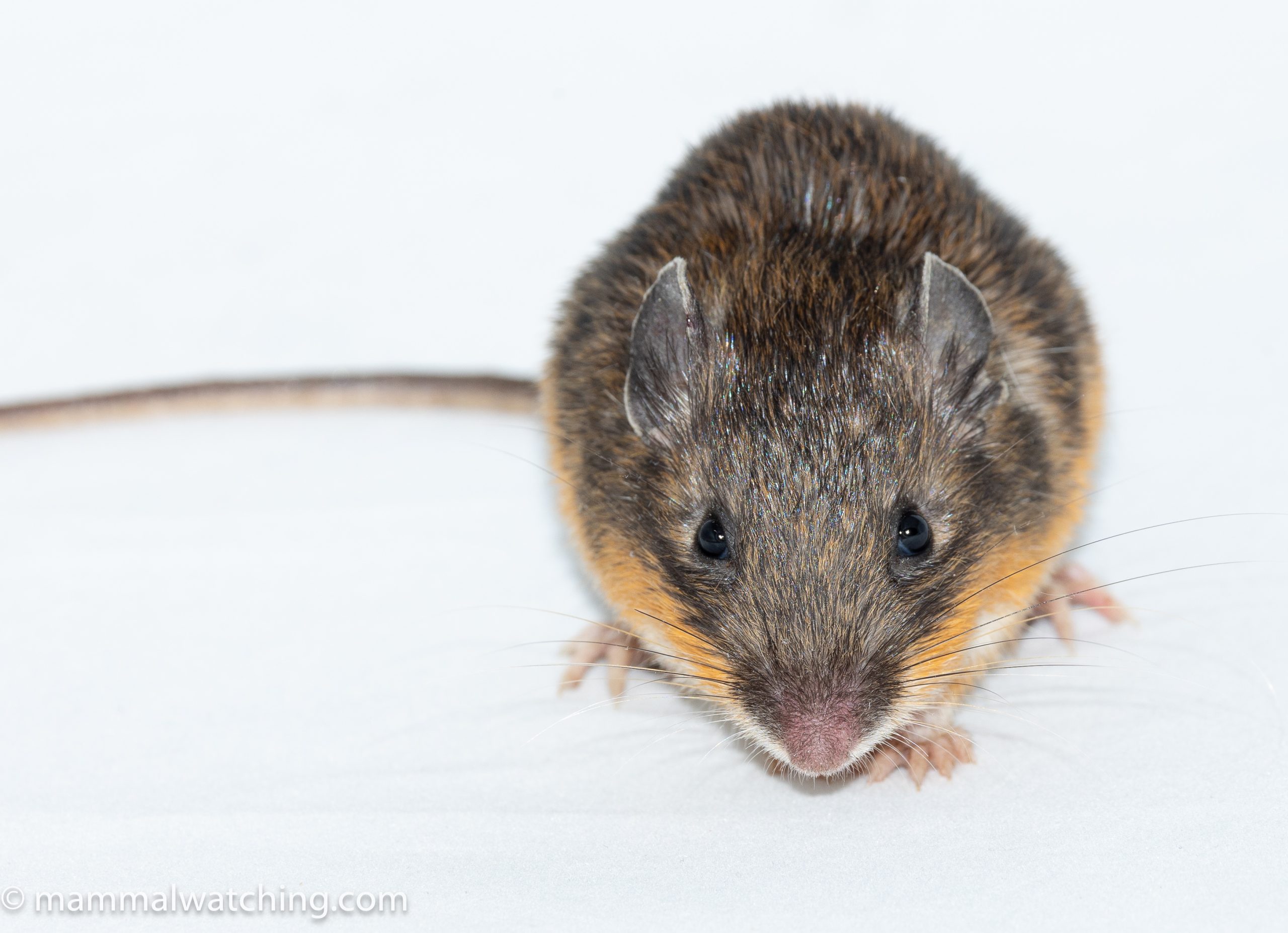
Mexico
Mexico is a wonderful country, with a great many endemic mammals and yet seems rarely visited by mammalwatchers.
I first visited in 1989 and spent 8 weeks backpacking around the country. I don’t remember seeing any mammals, though I wasn’t really looking and spent a good deal of my time doubled-up in pain in the toilets of various long distance coaches.
I returned in 2012 for a week of proper mammalwatching trip to the country, and again in 2015 for a night in Mexico City. In 2018 I returned for long weekends with Mexican biologist Juan Cruzado Cortes to Oaxaca and Mexico City and Veracruz , to the Yucatan Peninsula in 2019 and Tabasco in 2020. I spent a week with Juan in 2021 visiting Sinaloa, Sonora and Hidalgo. In 2022 we spent a week in Baja California Sur, Nuevo Leon and Coahuila, and in 2024 I spent a week with him in Chiapas and Oaxaca. I returned for a few days in May 2024 to look for Dwarf Sperm Whales and Vaquitas in Baja Sur and Norte and in 2025 went back to the Yucatan for a long weekend.
Baja California Norte
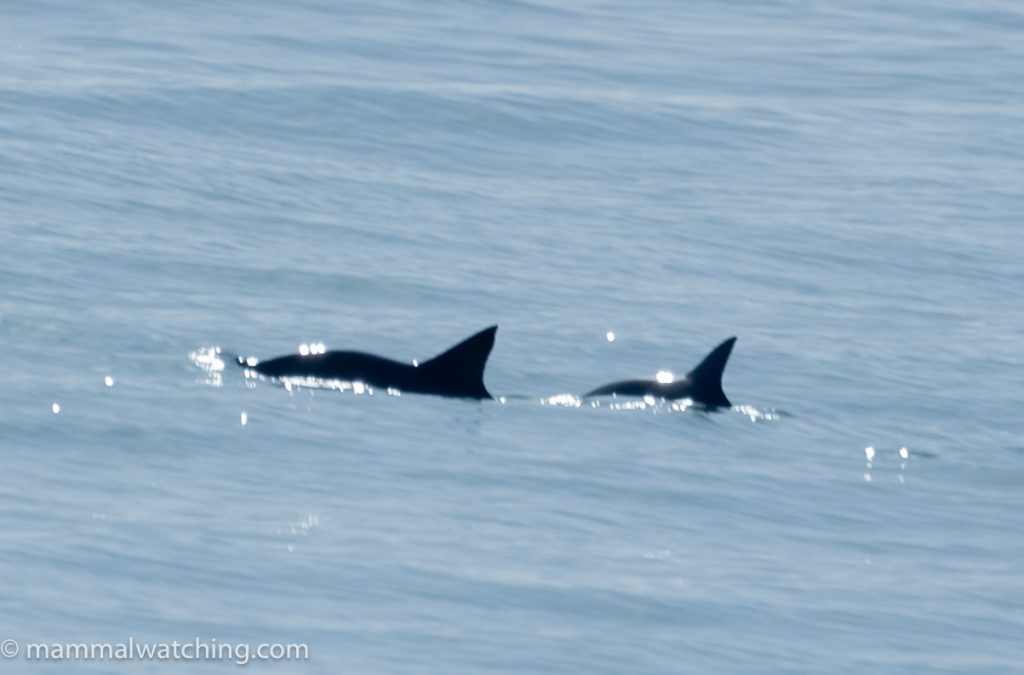
Vaquita, Phocoena sinus, 2024.
In 2024 I managed to get a space for two days on the annual Vaquita survey out of San Felipe. I was very lucky to see a pod of four Vaquita, as well as Bryde’s Whales and California Sealions. A brief spotlight in San Felipe produced a Round-tailed Ground Squirrel, a few kangaroo rats (Merriam’s most likely) and a Black-tailed Jackrabbit.
Baja California Sur
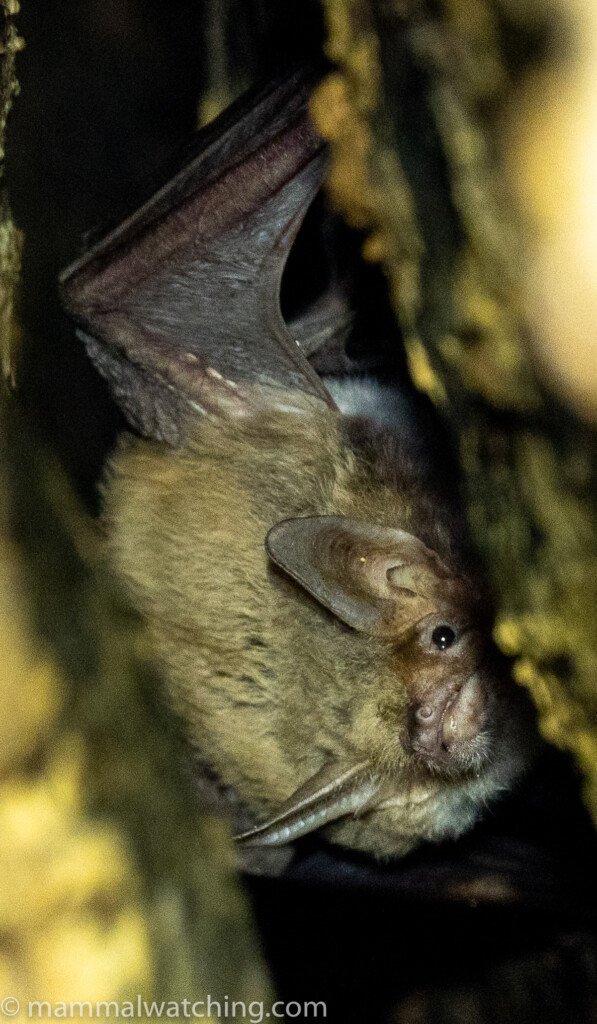
Fish-eating Bat, Myotis vivesi. Isla Coronado, 2022.
Four days in BCS in 2022 with Juan Cruzado produced Dalquest’s and Spiny Pocket Mice, Eva’s Desert Mice, Mexican Greater Funnel-eared Bat and feral horses at Sierra Laguna Biosphere Reserve.
Near La Paz we saw Bottlenose Dolphins and White-tailed Antelope Squirrels and just south in San Juan de los Planes we caught Cerralvo Pocket Mouse and more Eva’s Desert Mice, as well as Western Pipistrelle, California Myotis and Cave (Peninsular) Myotis.
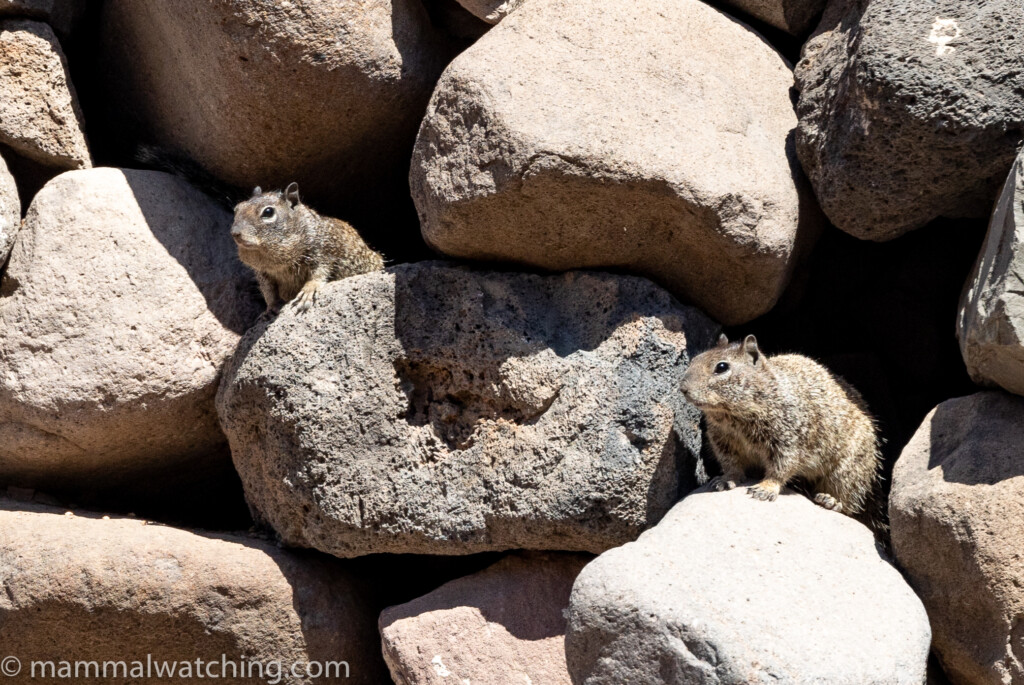
Baja Rock Squirrel, Otospermophilus variegatus atricapillus. Mission San Francisco, 2022
A night in Loreto produced Little Desert Pocket Mouse, Eva’s Desert Mouse with Rock Squirrels at the nearby mission San Francisco Javier. And in and around Isla Coronodao we saw Lesser Long-nosed Bat, Fish-eating Bats, Californian Sea Lions and more Bottlenose Dolphins.
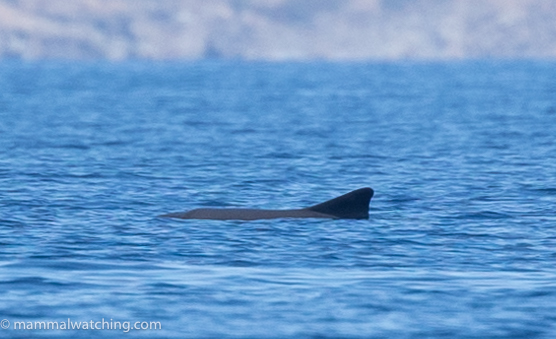
Dwarf Sperm Whale, Kogia simus. 2024
In 2024 I spent a couple of nights at La Ventana and was successful in my search for Dwarf Sperm Whales. We also saw Bottlenose Dolphins, California Sealions, Black-tailed Jackrabbits and White-tailed Antelope Squirrels.
Campeche
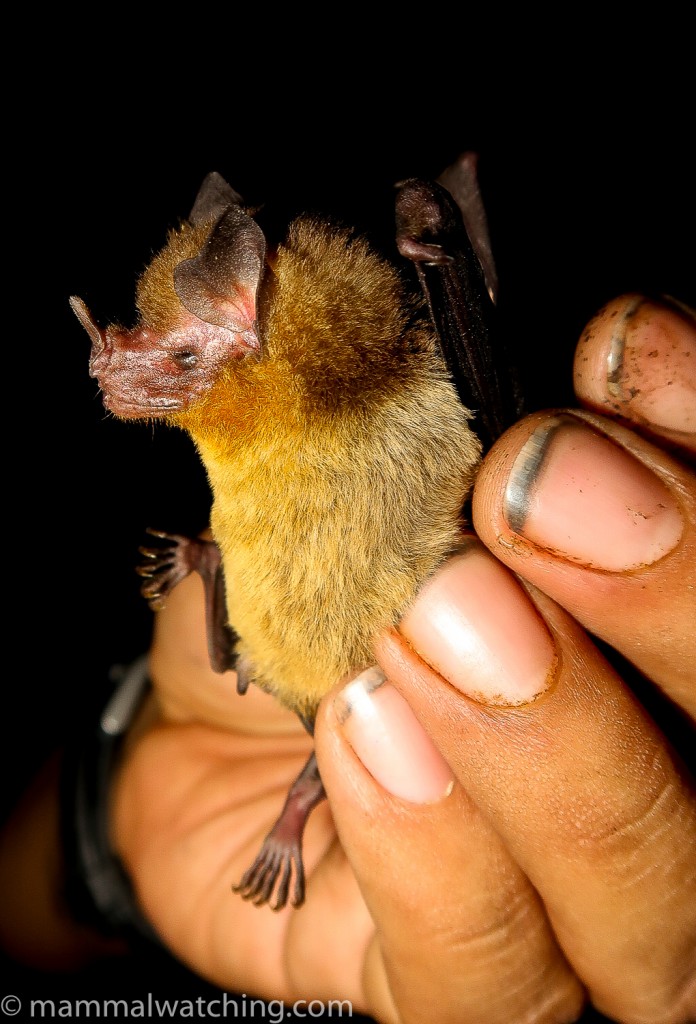
Orange-throated Bat, Lampronycteris brachyotis
During a night here in 2019 we caught Ghost-faced, Orange-throated and Great Fuit Eating Bats along with Big-eared Climbing Rats in Calakmul. Elsehwhere in the park I saw Deppe’s and Yucatan Squirrels, Grey Foxes, Central American Agoutis and Spider Monkeys, plus a White-nosed Coati and a Kinkajou. There were Woolly False Vampire Bats and a Greater White-lined Bat roosting at Hormiguero nearby.
Chiapas
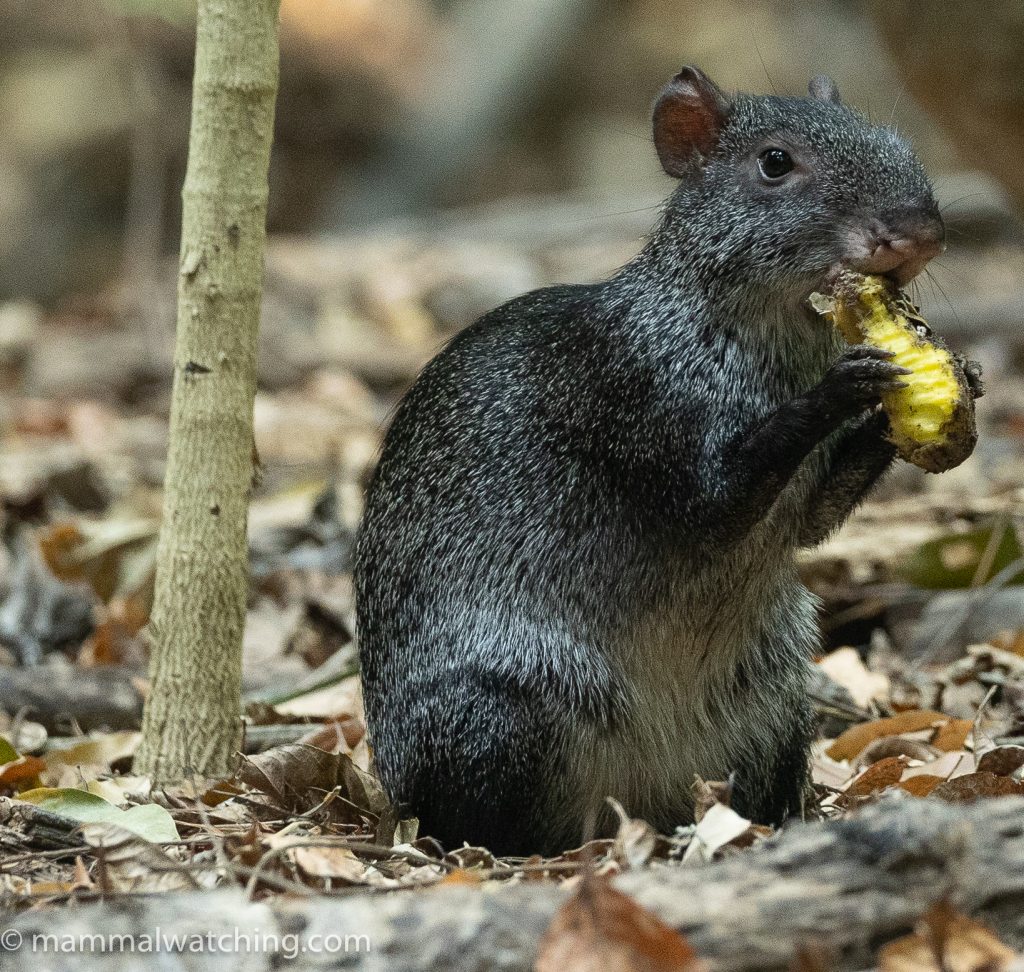
Mexican Agouti (Dasyprocta mexicana), Tuxtla Guttierez, 2024
In 2024 there were introduced Mexican Agoutis and Mantled Howler Monkeys living wild around the Tuxtla Guttierez zoo. Just out of town we visited a difficult cave to enter and saw Greater Sac-winged Bats, Dobson’s Lesser Mustached Bats and Mexican Funnel-eared Bats emerge.
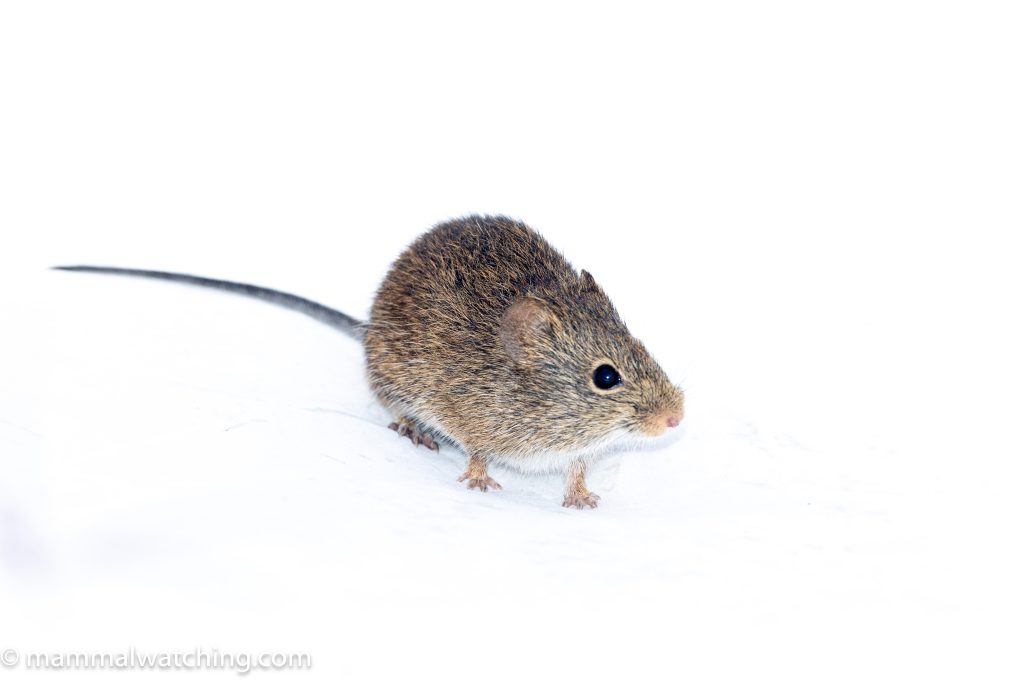
Montane Cotton Rat (Sigmodon zanjonensis), Coapilla, 2024
A night in the mountain town of Coapilla in 2024 produced Virginia Opossum, Red-bellied Squirrel, Fulvous Pygmy Rice Rat, Montane Cotton Rat, plus Toltec Fruit-eating Bat, Honduran Yellow-shouldered Bat, Broad-eared Free-tailed Bat and a Kinkajou.
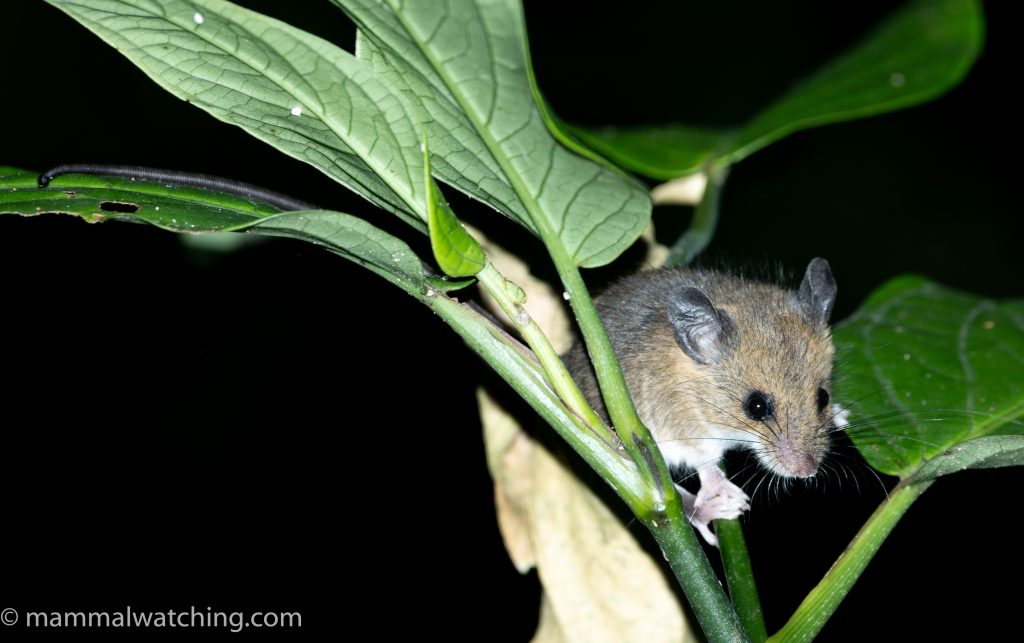
Slender Harvest Mouse (Reithrodontomys gracilis), La Pera, 2024
Over two nights in La Pera Reserve we saw Orizaba Deermouse, Cordillera Deermouse, Tehuantepec Deermouse, Totontepec Deermouse, Slender Harvest Mouse, Mexican Harvest Mouse, Peters’s Climbing Rat, Mesoamerican Common Mustached Bat, Sowell’s Short-tailed Bat, Common Vampire Bat, Tschudi’s Tailless Bat, Jamaican Fruit-eating Bat, Toltec Fruit-eating Bat, Northern Yellow-shouldered Bat, Northern Hairy-legged Myotis and two Kinkajous.
Coahuila
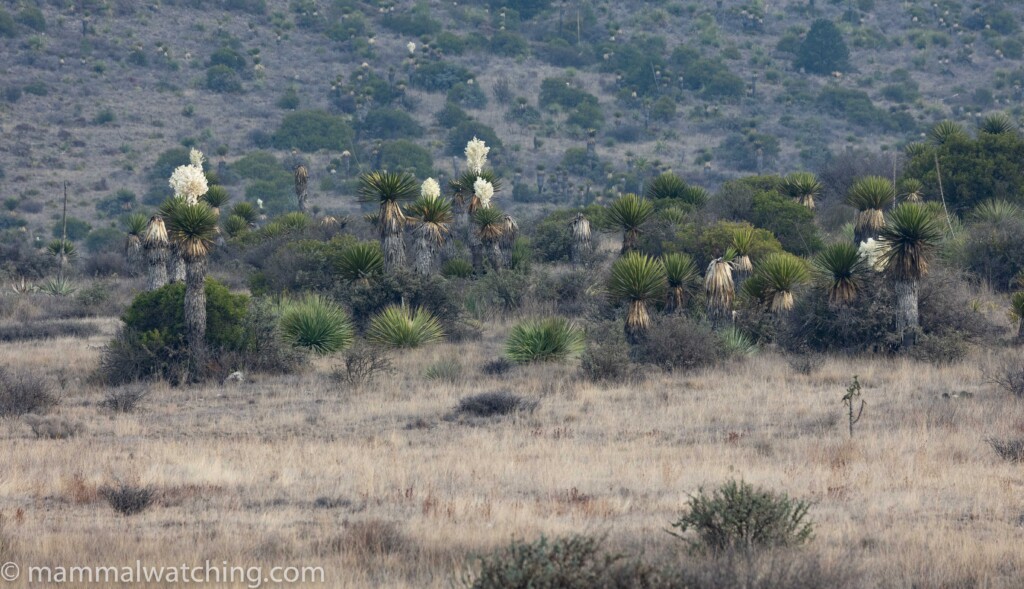
Chapultepec
Three nights in in 2022 in a beautiful area around Saltillo and Chapultepec was productive. Near Saltillo we found Cactus Mice, a Big Brown Bat, Goldman’s Woodrat, the very rare Hooper’s Deer Mouse and a Mexican Big-eared Bat.
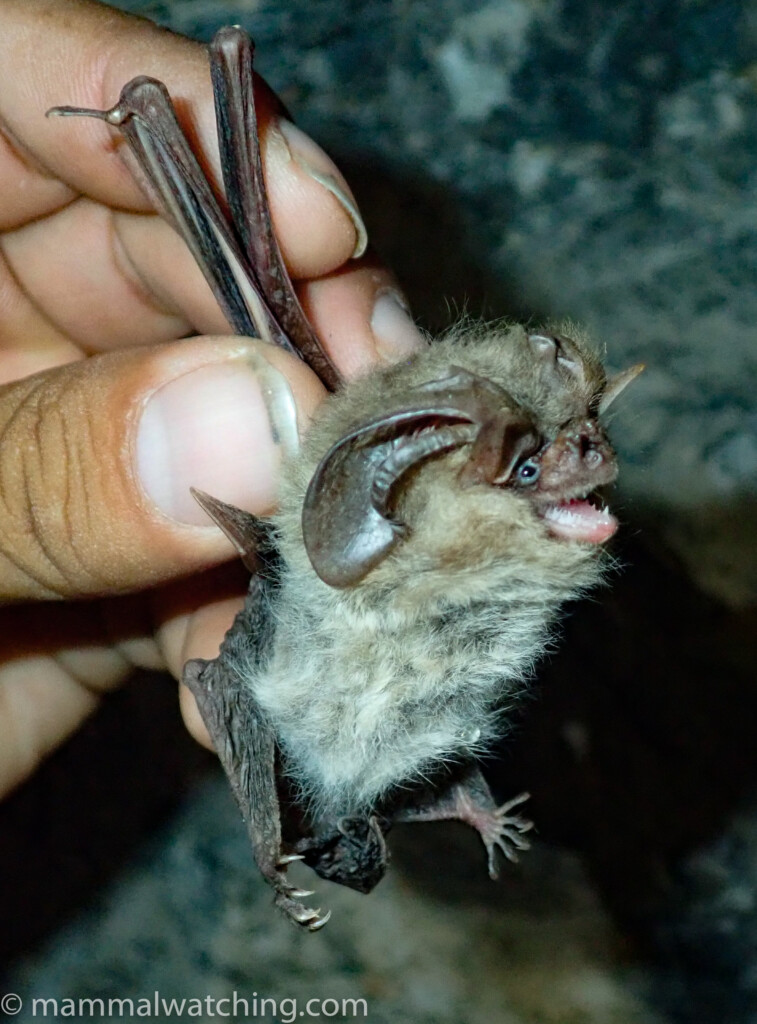
Mexican Big-eared Bat, Corynorhinus mexicanus
Near Chapultepec we caught many bats from several species: Townsend’s Big-eared Bats, Western Small-footed, Fringed and the very rare Flat-headed Myotis plus Big Brown Bats. We saw Coyotes, White-tailed Deer and Mexican Prairie Dogs and caught Fulvous Harvest Mouse, Mearn’s Grasshopper Mouse, Cactus Mouse and Rock Mouse.
In the mountain pine forests around Monterreal we saw Allen’s Squirrels and Mexican Voles but not the Sierra del Carmen Chipmunk we were looking for.
Hidalgo
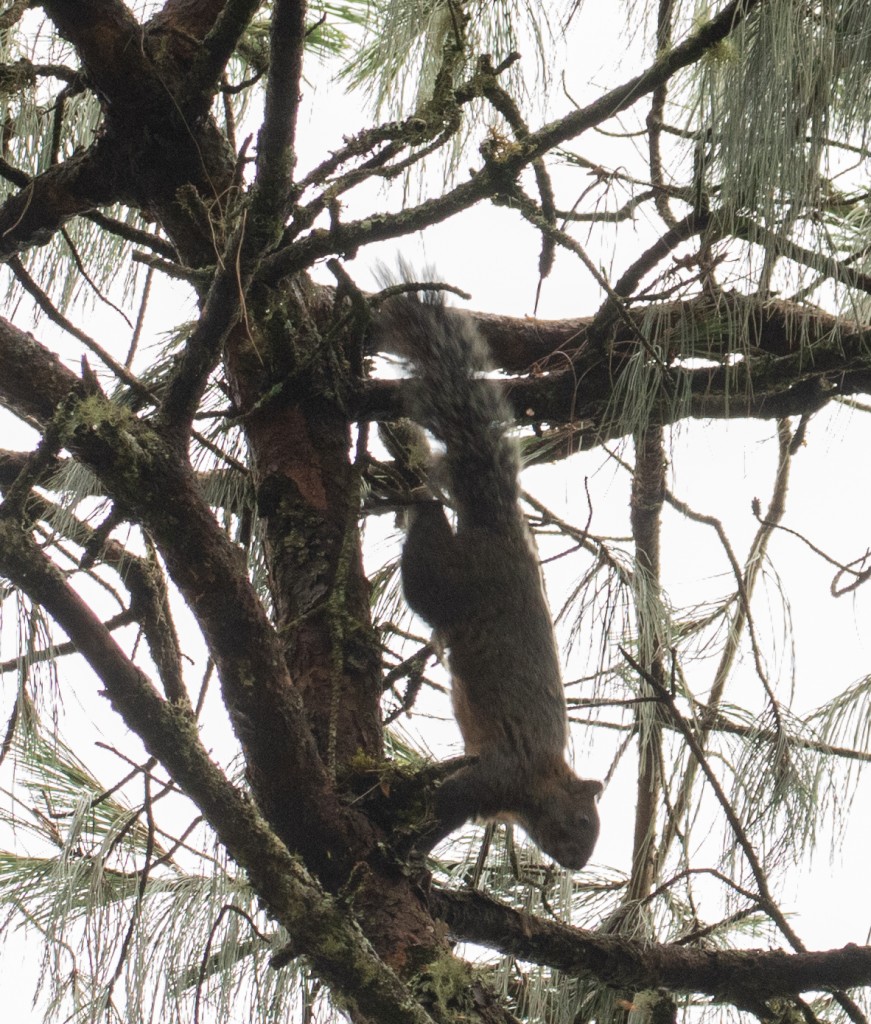
Peter’s Squirrel, Sciurus oculatus
In 2021 we caught Black-eared, Nimble-footed and Transvolcanic Deer Mice plus a Volcano Harvest Mouse at El Chico, and saw Mexican Voles. Close to Zacualtipan the next day we saw Deppe’s and Peter’s Squirrels, Aztec Fruit-eating Bat and a huge colony of Mexican Long-nosed Bats.
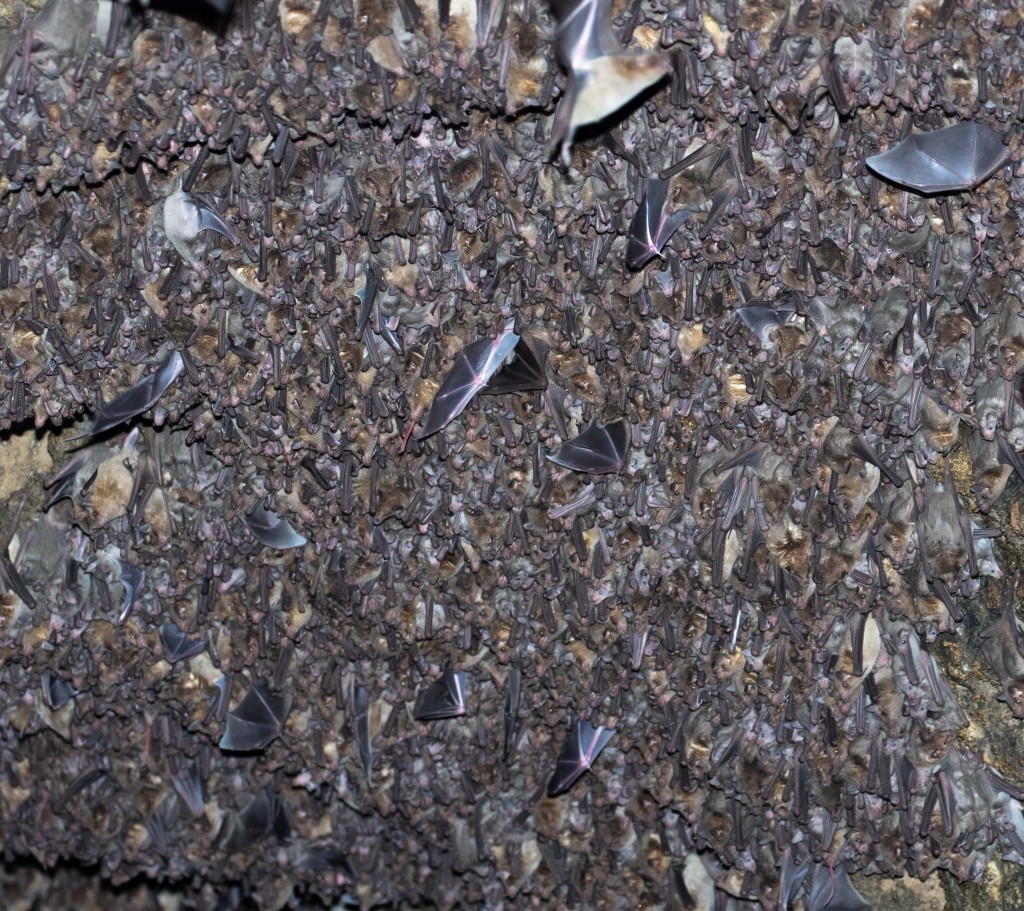
50,000 Greater Long-nosed Bats, Leptonycteris nivalis
Trapping there produced Tamualipas White-ankled, Black-footed and Blackish Deer Mice plus a rare Nelson’s Giant Deer Mouse.
Jalisco
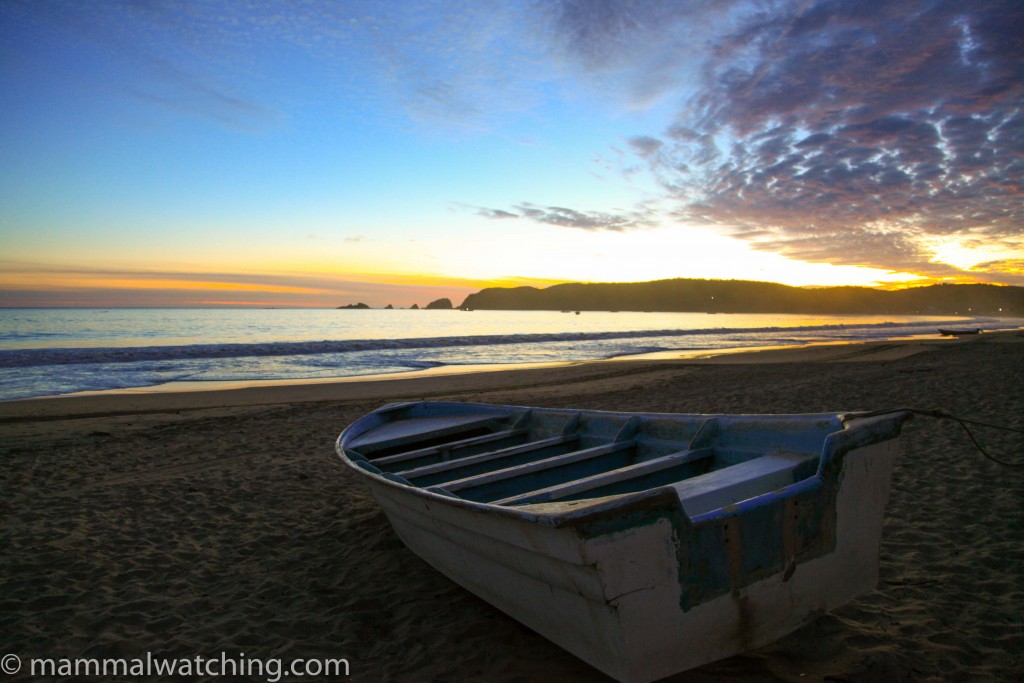
Punta Perula, Costa Alegre
In January 2012 I was looking for a place to do some work and see a few mammals on the side. I had been emailing a bit with Mark Olson, a Mexican botanist, who was also interested in mammals. He had told me about the research at Cuixmala Reserve, which was run by Mexico’s National Autonomous University. It sounded perfect.
The station is not open to the public. But as I claimed I was a friend of Mark’s (which might have been exaggerating a bit I suppose) they let me stay in a dorm for 5 nights so long as I let them have my photographs for their library. A perfect place to relax, work and look for mammals: not necessarily in that order.
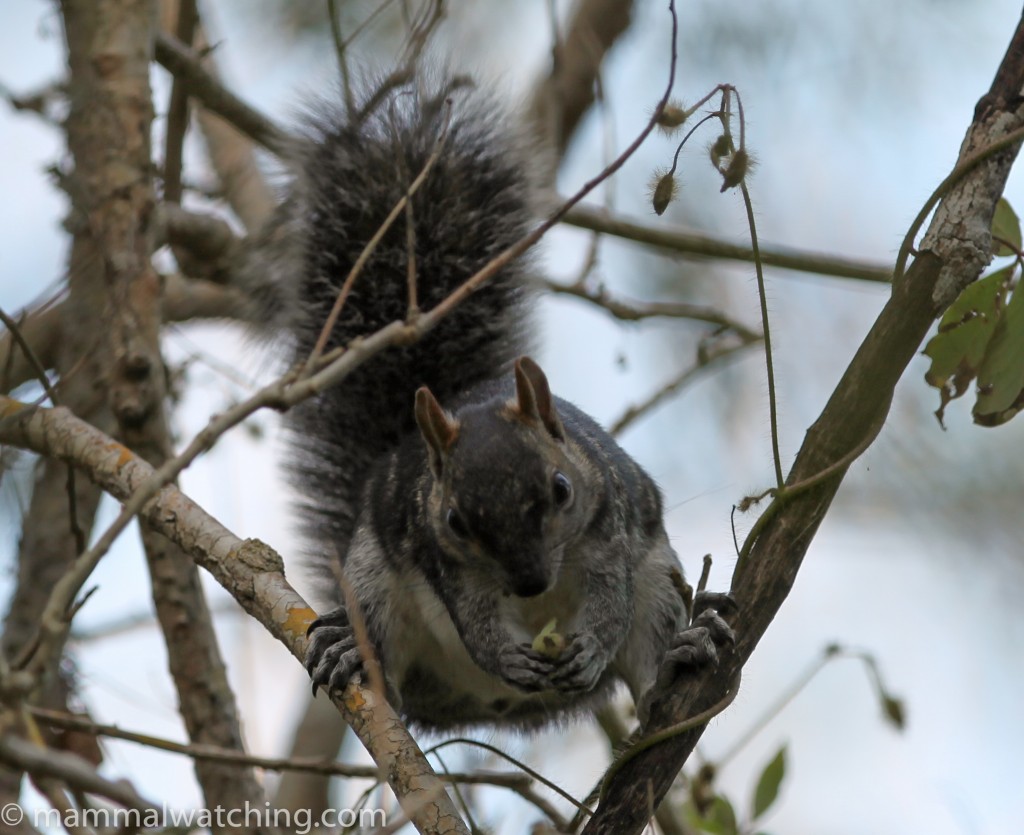
Collie’s squirrel, Sciurus Colliaei
I flew into Puerto Vallarta, a pretty town on the precipice of being ruined by mass tourism. Chamela is a two or three hours south. En route I stopped at Le Kliff restaurant just south of Puerto Vallarta for a drink in the late afternoon and a Coati was hanging around the kitchen.
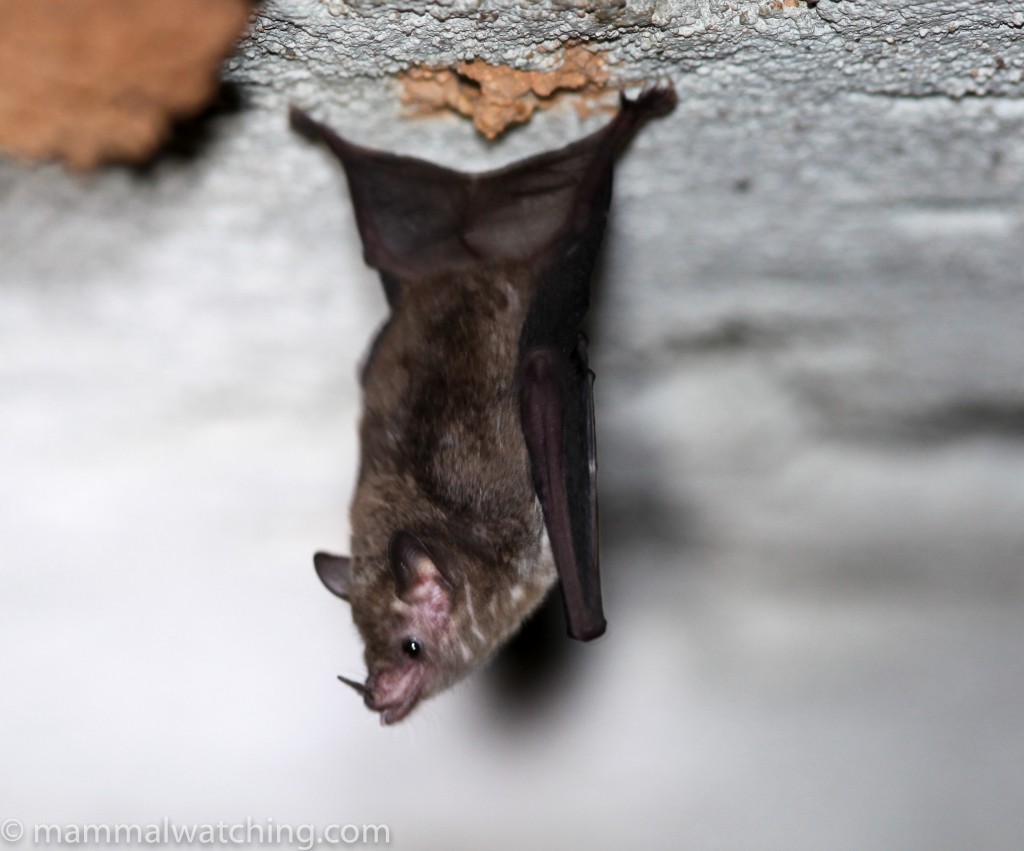
Merriam’s Long-tongued Bat, Glossophaga merriami
I spent 5 nights at Cuixmala. January is the dry season and a good time to see mammals, or so I was told. I spent a couple of hours most nights spotlighting from my car (outside the reserve – there aren’t any roads in the station) and a bit of time looking on foot at night too. I didn’t do a great deal in the day other than check small mammal traps and take an early morning walk for a couple of hours.
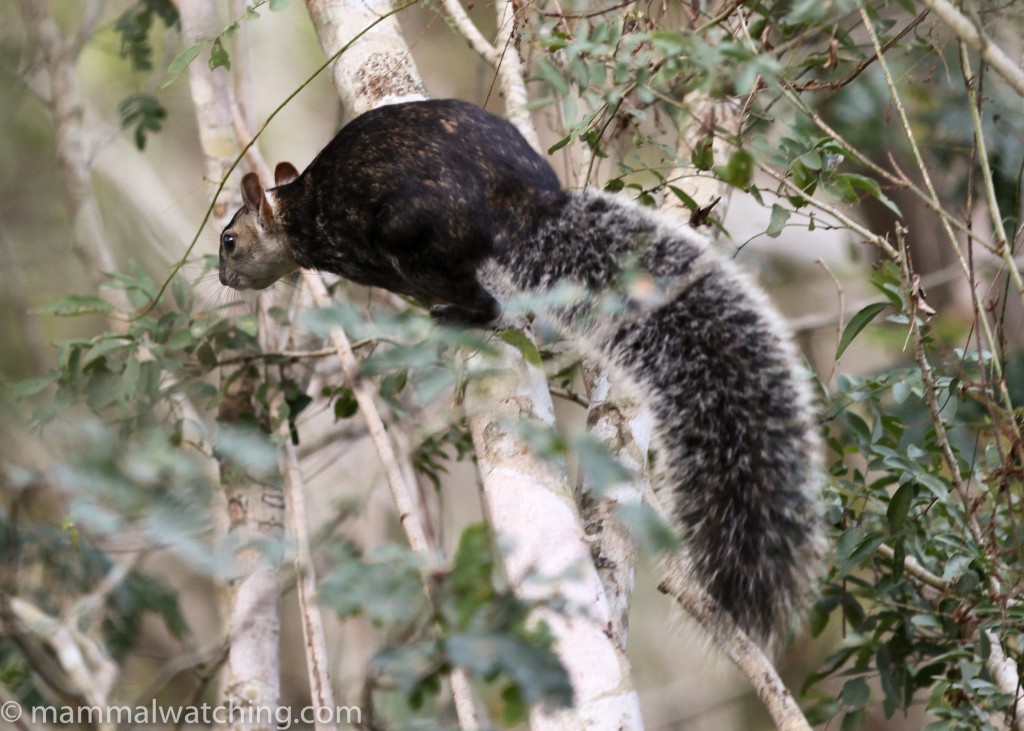
Collie’s Squirrel, Sciurus colliaei
An impressive list of mammals have been recorded at the station. I did not have a lot of luck finding most of them. Mark Olson, from the Mexican Autonomous University, told me that Jaguarundis were relatively common, but no one I spoke to at the station had seen them more than once.
The only diurnal mammals I saw during the day were the endemic Collie’s Squirrels, which were quite common, as were Coatis. I saw a large group one morning cross a steep little creek a kilometre from the station, while another was hanging around the back of the kitchen.
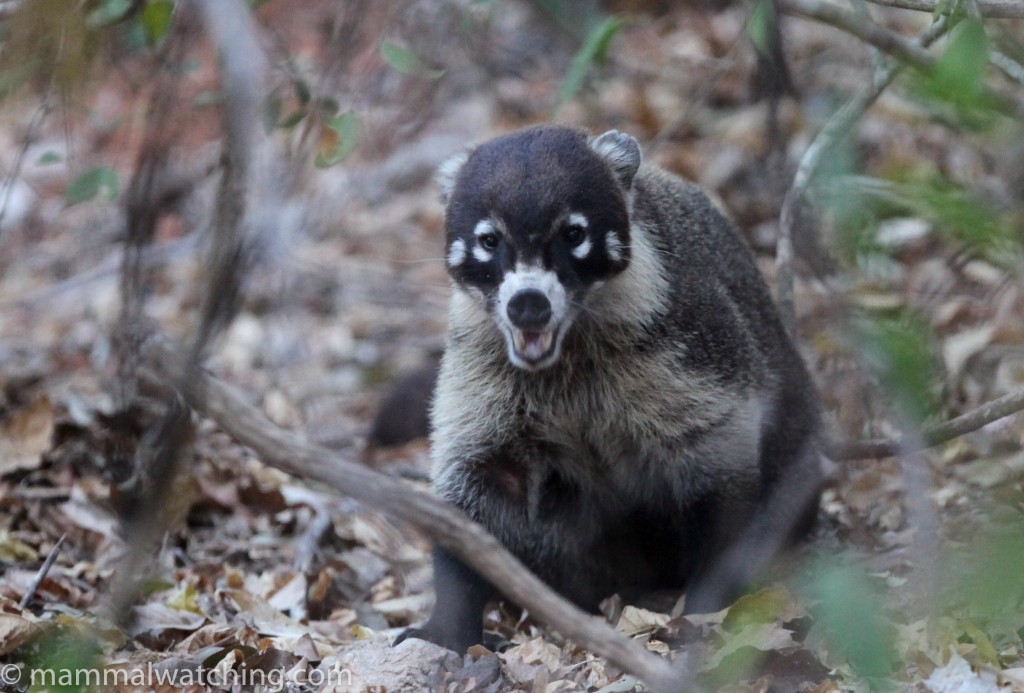
Coati, Nasua narica
A colony of Grey Sac-winged Bats were roosting in a tunnel cut into the research station below the kitchen.
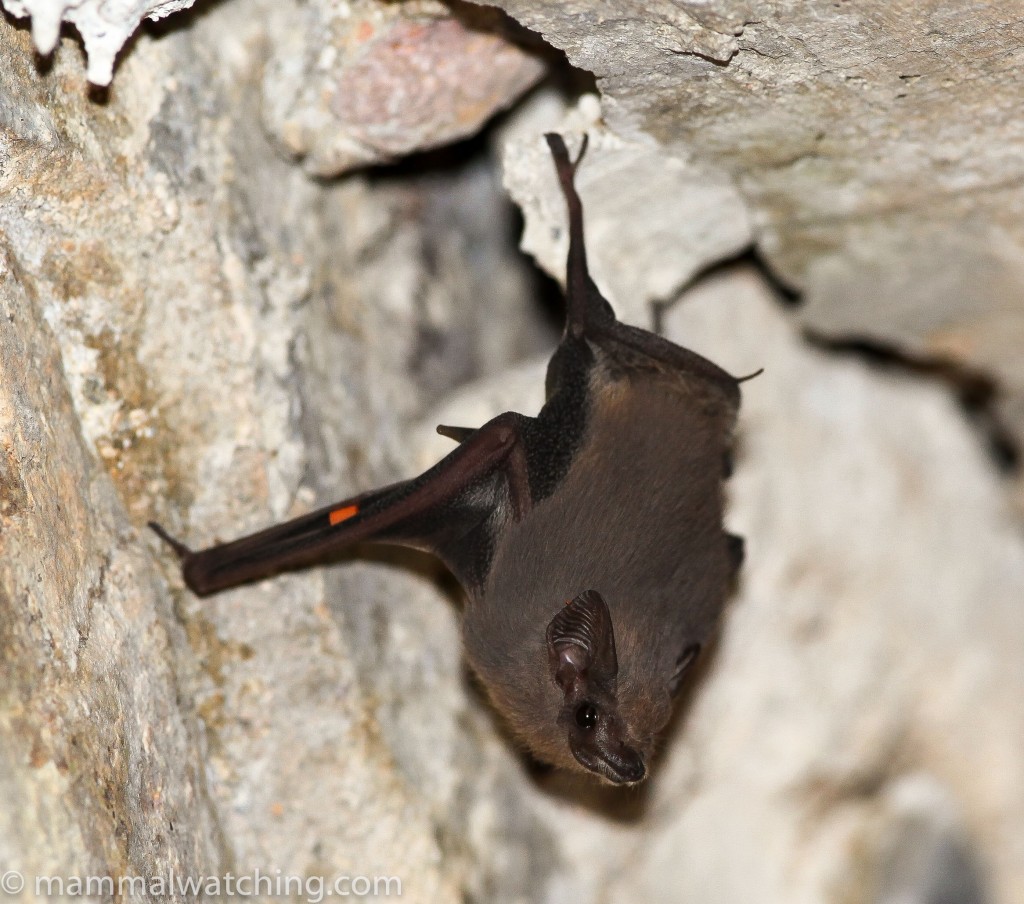
Grey Sac-winged Bat, Balantiopteryx plicata
I saw a Common Long-tongued bat using it as a night roost too, along with some impressively large and scary looking Whip Spiders.
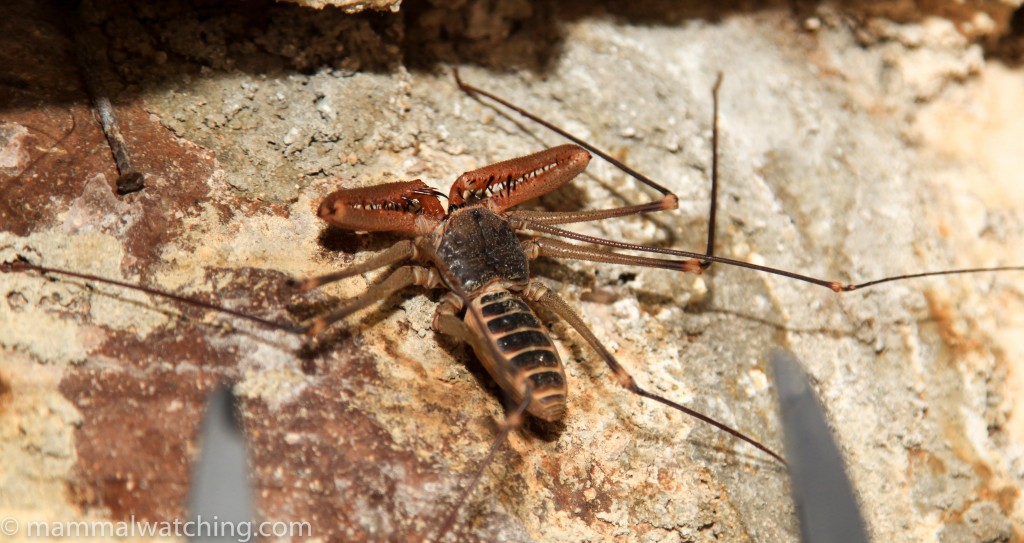
Whip Spider sp.
Small mammal trapping got more productive as the week went on.
I caught nothing on the first night, and then just a single Painted Spiny Pocket Mouse on the next two nights.
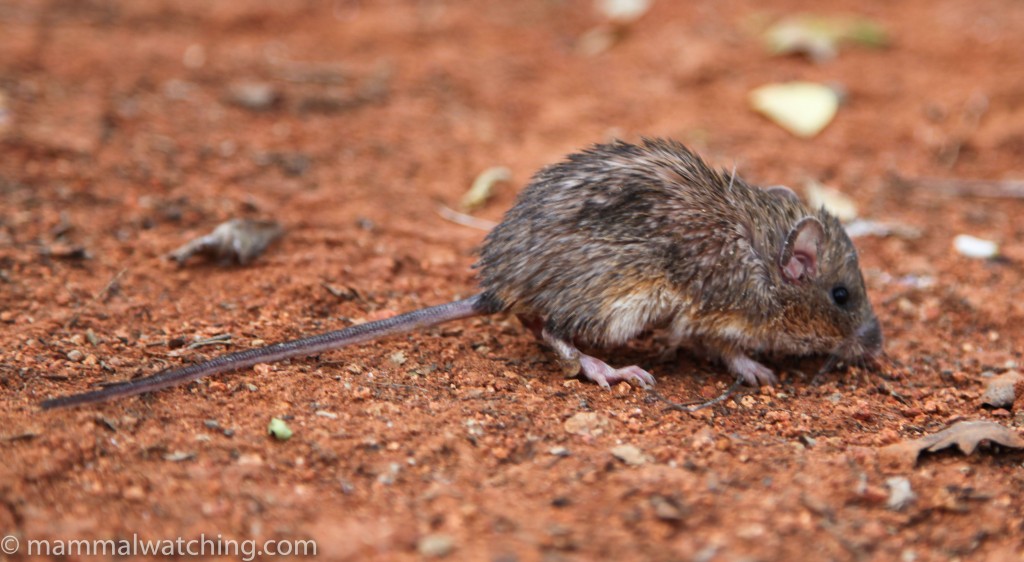
Painted Spiny Pocket Mouse, Heteromys pictus
On the 4th night I caught several pocket mice along with a Jalisco Deer Mouse.
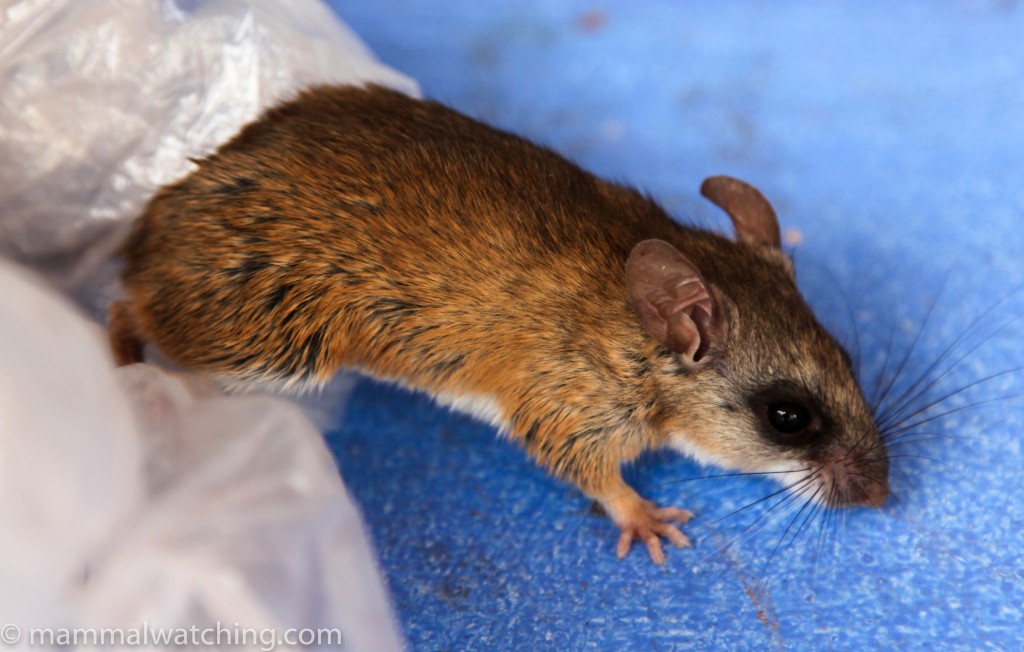
Jalisco Deer Mouse, Peromyscus chrysopus
On the last night I added a couple of Michoacan Deer Mice to the list. I caught both in the bat tunnel where they were easy to see scurrying around, but hard to identify.
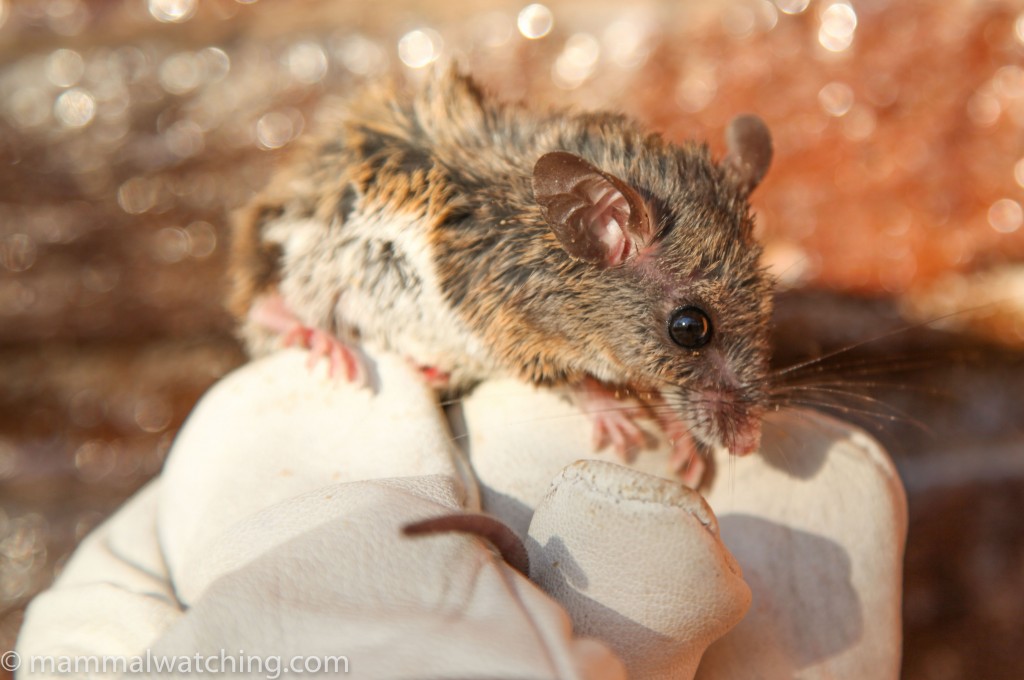
Michoacan Deer Mouse, Osgoodomys banderanus
Ten hours or so of spotlighting by car and foot produced only a single Virginia Opposum. It was not easy to find a quiet stretch of road to go spotlighting along in the early evening (the gate into Chamela shuts at 9 p.m.). But there were mammals around. I found fresh Puma crap (or I guess it could have been Jaguar) just 100 metres from the research station itself.
I also looked for Mexican Cottontails along the highway south of Chamela, especially near the El Careyes Hotel gate (around KM 54) where they were supposedly present. I couldn’t see any.
Mexico D.F.
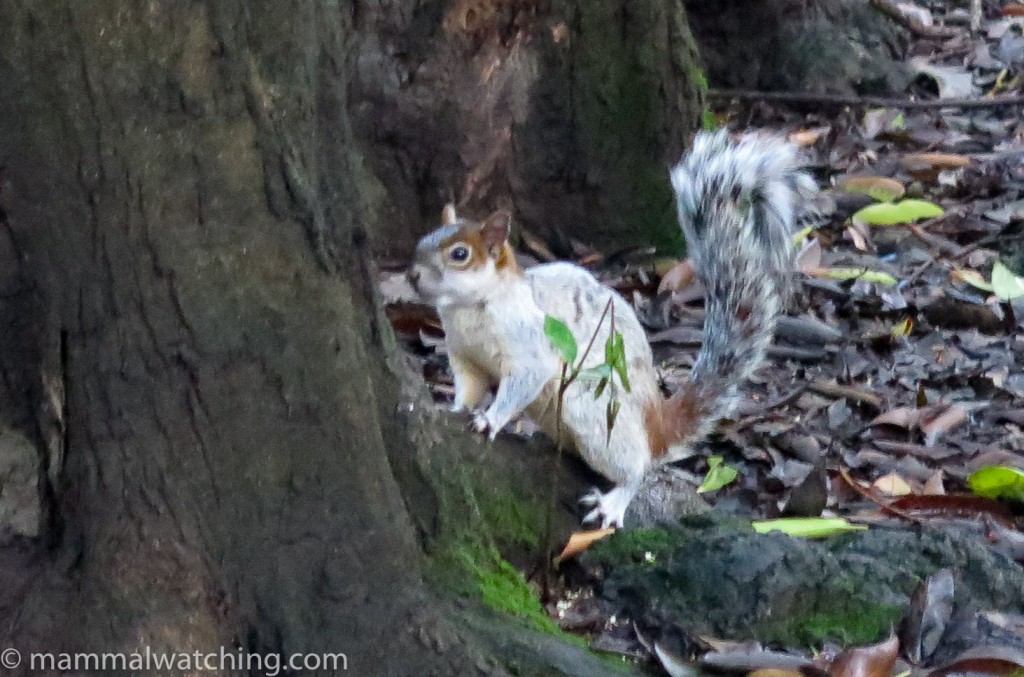
Mexican Grey Squirrel, Sciurus aureogaster
In July 2015 Mexican (Red-bellied) Gray Squirrels were easy to spot in Chapultepec Park in the middle of Mexico City early in the morning. And Raccoon were I assume also common at night, judging by the amount of trash next to each rubbish bin in the park.
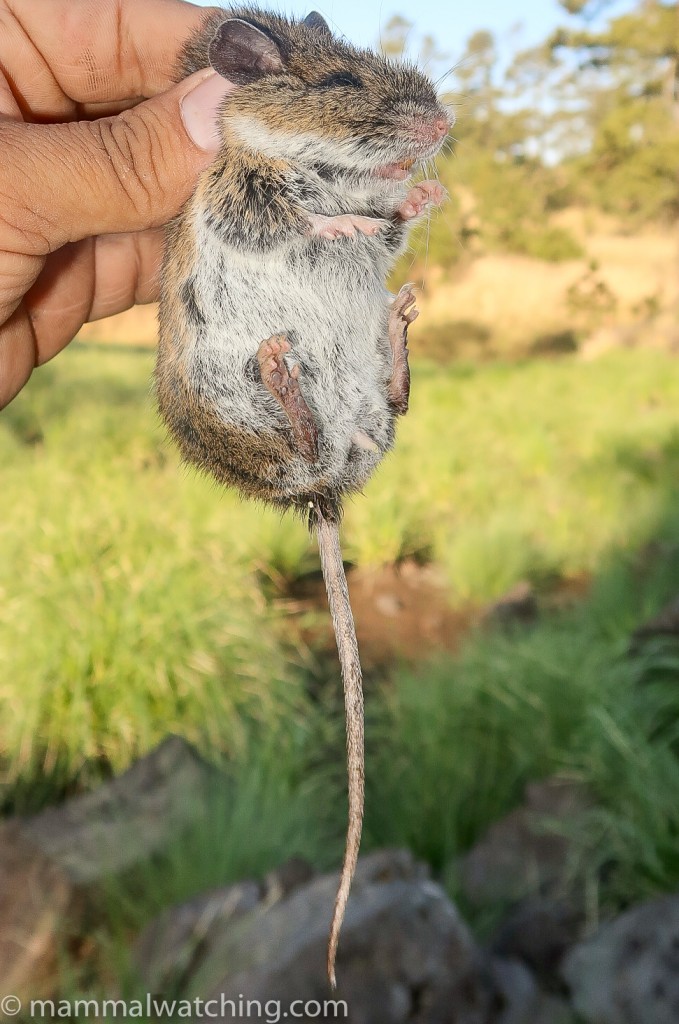
Mexican Volcano Mouse, Neotomodon alstoni
In 2018 a morning a Milpa Alta produced several Volcano Rabbits, Eastern Cottontails, a Mexican Cottontail and a Merriam’s Pocket Gopher. Small mammal trapping was productive with many Volcano Mice, and fewer Black-eared Deer Mice and Sumichrast’s Harvest Mice. I missed two Long-tailed Weasels that morning, which others in the group saw.
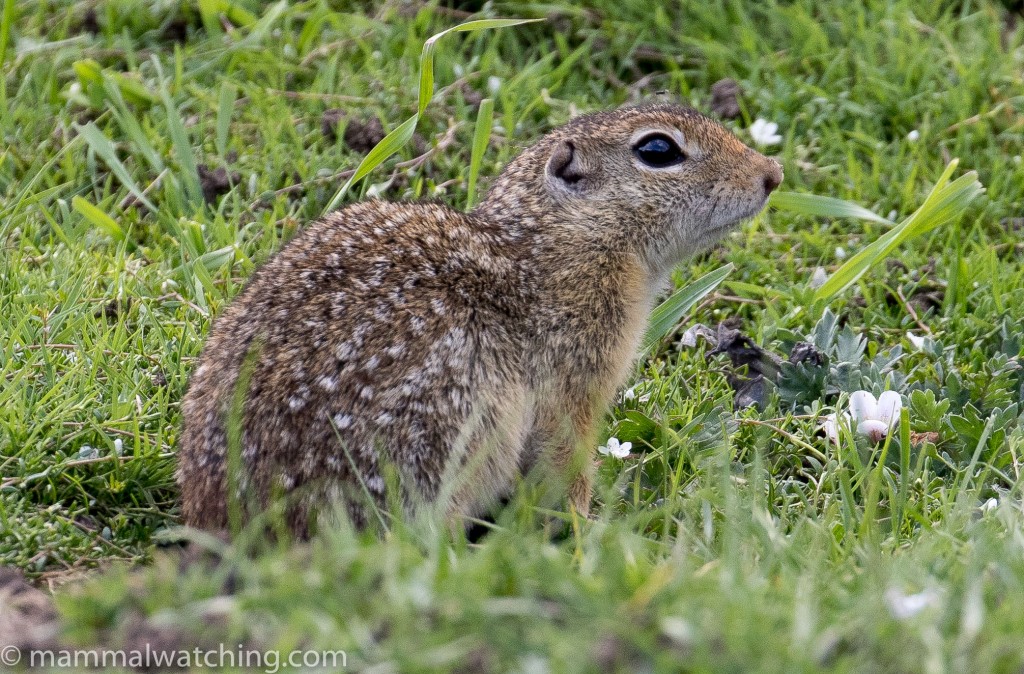
Mexican Ground Squirrel, Ictidomys mexicanus
On the way back to the airport in 2018, I spotted a Mexican Ground Squirrel at Zoquiapan (which is now a different species to that in the SW USA).
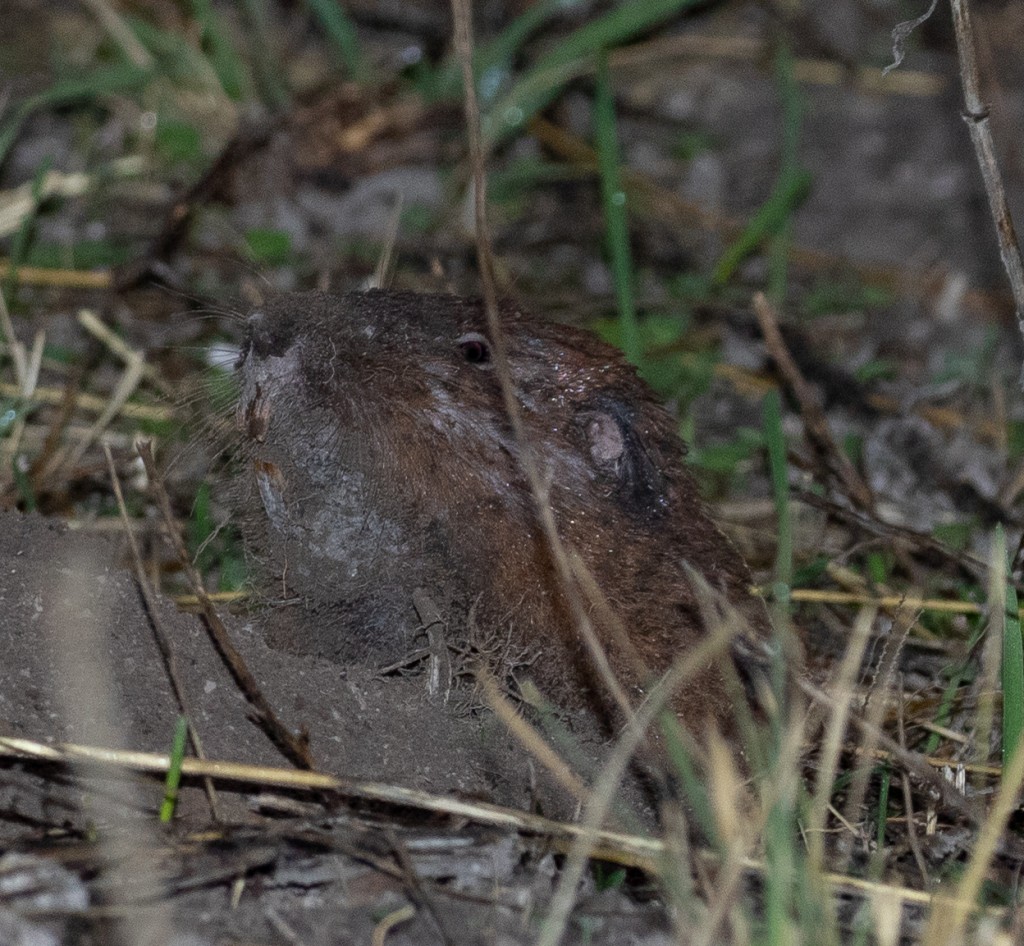
Smoky Pocket Gopher, Cratogeomys fumosus
In 2021 Smoky Pocket Gophers were easy to see at Ecatapec. There was an Eastern Cottontail there too plus a probable White-eared Cotton Mouse.
Nuevo Leon
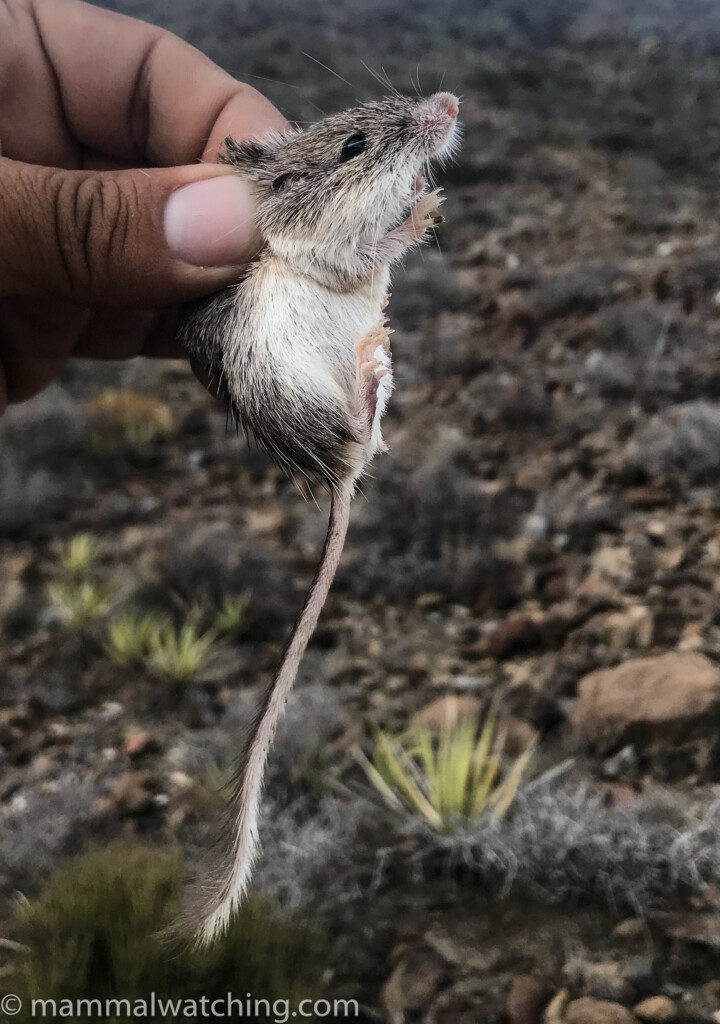
Nelson’s Pocket Mouse, Chaetodipus nelsoni
During a night in Mina in 2022 we saw an Allen’s Squirrel and Black-tailed Jackrabbits. We also caught Merriam’s Kangaroo Rats, White-ankled Mice and Nelson’s Pocket Mice in the desert outside town.
Oaxaca
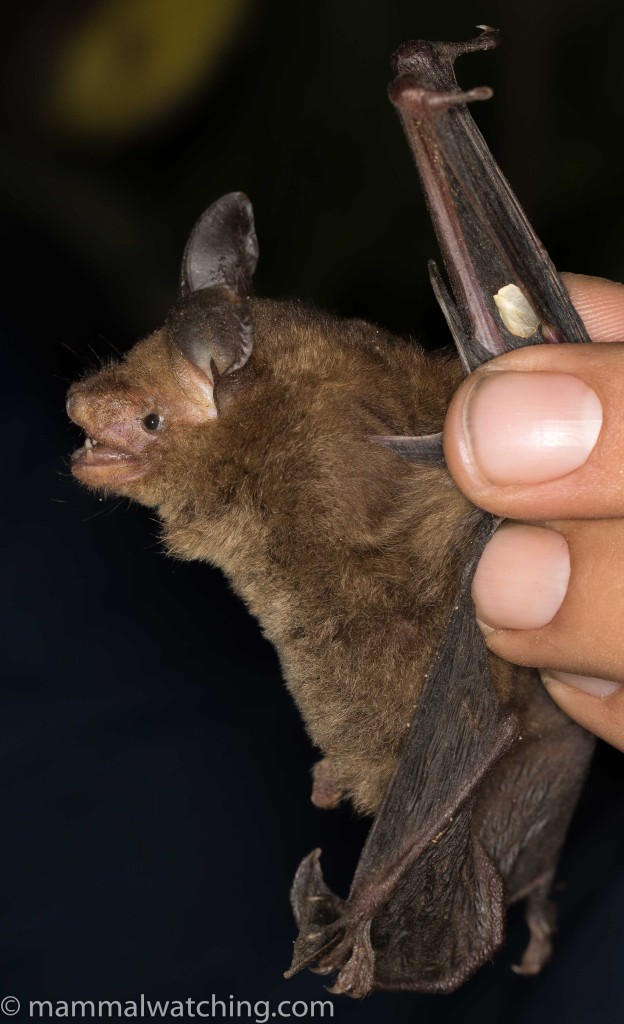
Van Gelder’s Bat, Bauerus dubiaquercus
A long weekend trapping in Oaxaca in March 2018, with Mexican biologist Juan Cruzado was a lot of fun. Though rodent populations seemed quite low, we caught a few nice endemic rodents and some great bats too.
In 4 days we caught and saw Rock Squirrel; Osgood’s, Tehuantepec and Mexican Deer Mice; House Mouse; Hooded Skunk; Kinkajou; Sowell’s Short-tailed Bat; Northern & Honduran Yellow-shouldered Bats; Aztec & Toltec Fruit-eating Bats; Mexican Free-tailed Bat; Van Gelder’s Bat (mega!); Big Brown Bat; Allen’s & Little Yellow Bats and Cave & Northern Hairy-legged Myotis and Mexican & Eastern Cottontails.
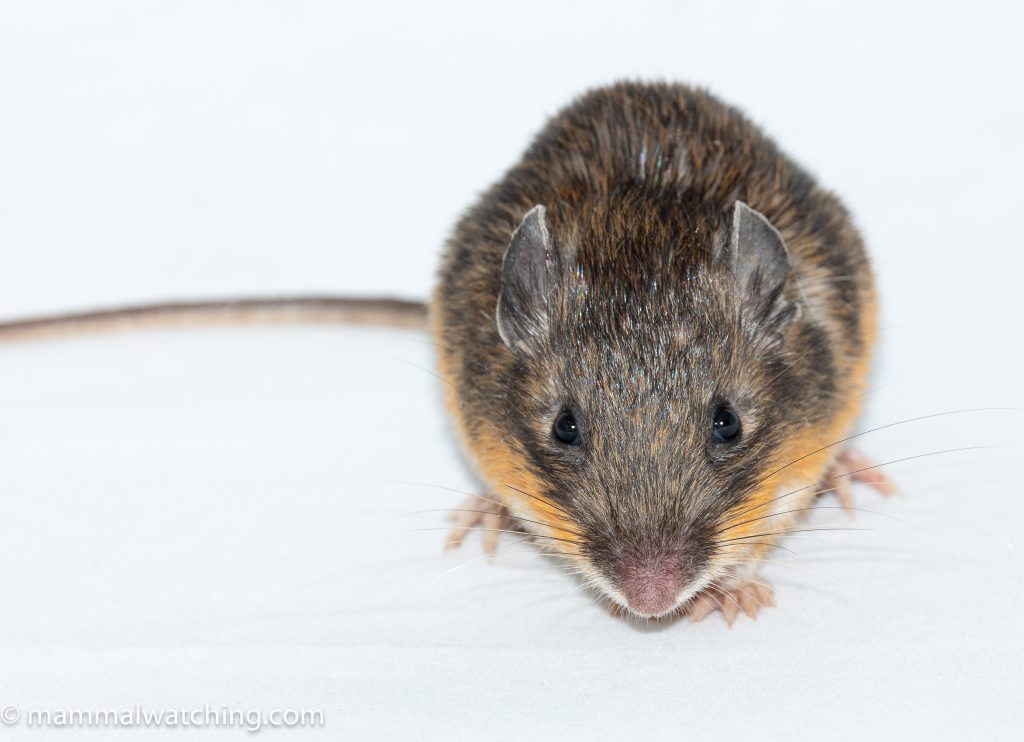
Painted Spiny Pocket Mouse (Heteromys pictus annectens)
I retuned in 2024.We spent a night in Pluma Hidalgo and caught a beautiful Painted Spiny Pocket Mouse, from the highland annectens subspecies, and saw Seba’s Short-tailed and Merriam’s Long-tongued Bats.
We didn’t find the Pygmy Spotted Skunks we were looking for around Huatulco on the Oaxaca coast, but did see Gray Sac-winged, Commissaris’s Long-tongued and Western Long-tongued Bats. A morning’s pelagic trip produced Common, Pantropical Spotted and Bottlenose Dolphins.
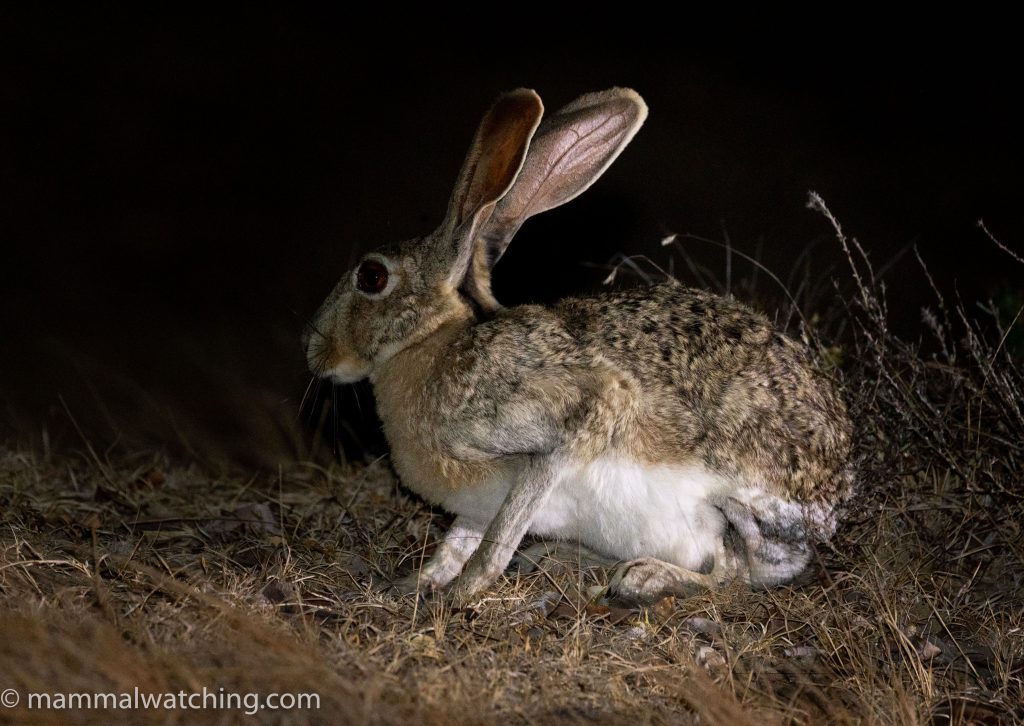
Tehuantepec Jackrabbit (Lepus flavigularis), San Francisco del Mar, 2024
In 2024 we visited the town of San Francisco de Mar, where we met up with Tehuantepec Jackrabbit researchers for a fantastic two nights. We saw Northern Black-eared Opossum, Tehuantepec Gray Mouse Opossum, Nine-banded Armadillo, Tehuantepec Jackrabbit, Eastern Cottontail (the aztecus subspecies), Red-bellied Squirrel, many American Hog-nosed and Hooded Skunks, Northern Raccoon and a Northern Gray Fox.
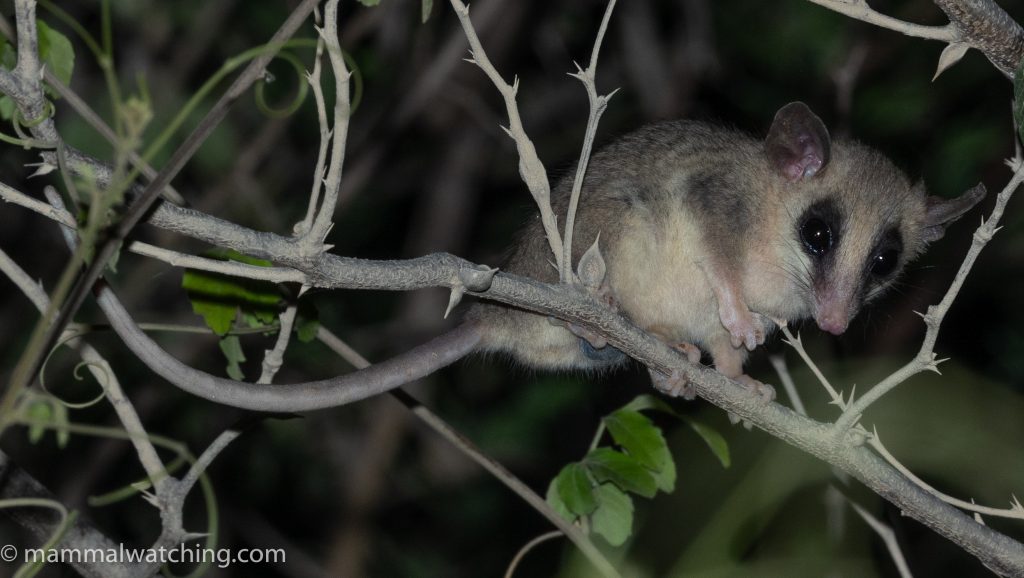
Tehuantepec Gray Mouse Opossum (Tlacuatzin canescens), San Francisco del Mar, 2024
We also saw a Lesser Long-nosed Bat, caught Davis’s Tent-making Bat and Slender Yellow Bat, and a local guide saw a Jaguarundi.
We spent a night in the mountains around Suchixtepec in 2024 and saw a Red-bellied Squirrel and Oaxacan Highlands Harvest Mouse. We trapped Orizaba, Broad-faced and Black-tailed Deermice, a Fulvous Harvest Mouse and Guerrero Rice Rats.
Puerto Vallarta
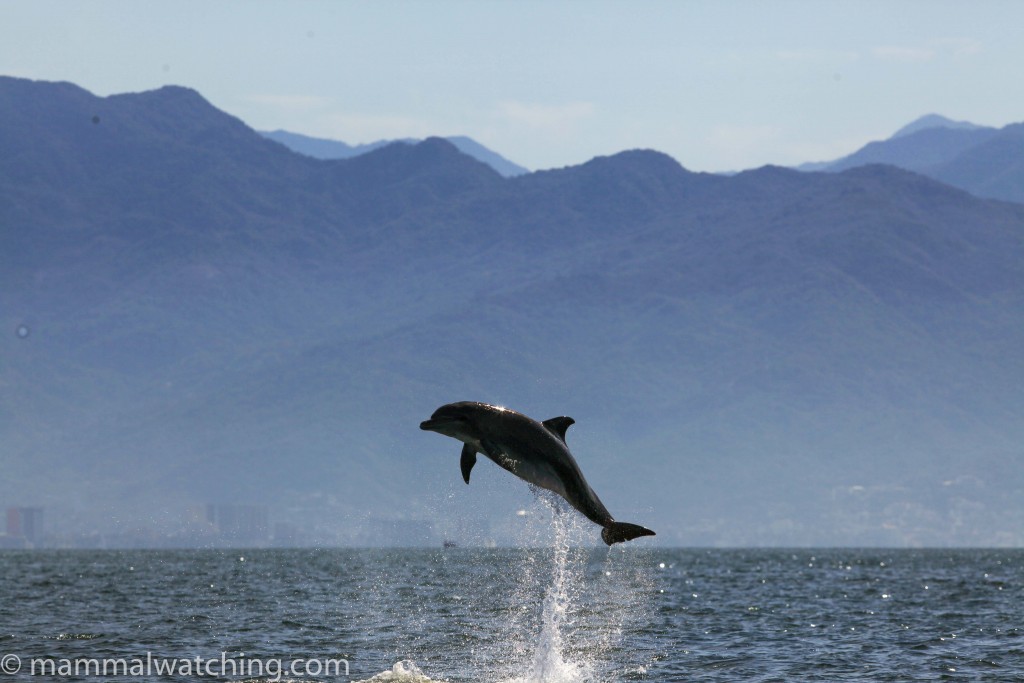
Common Bottlenose Dolphin, Tursiops truncatus
I spent the last morning of my 2012 visit looking for dolphins on a boat trip arranged by Wildlife Connection out of Puerto Vallarta. They organise whale watching trips as well as swimming with Bottlenose Dolphins.
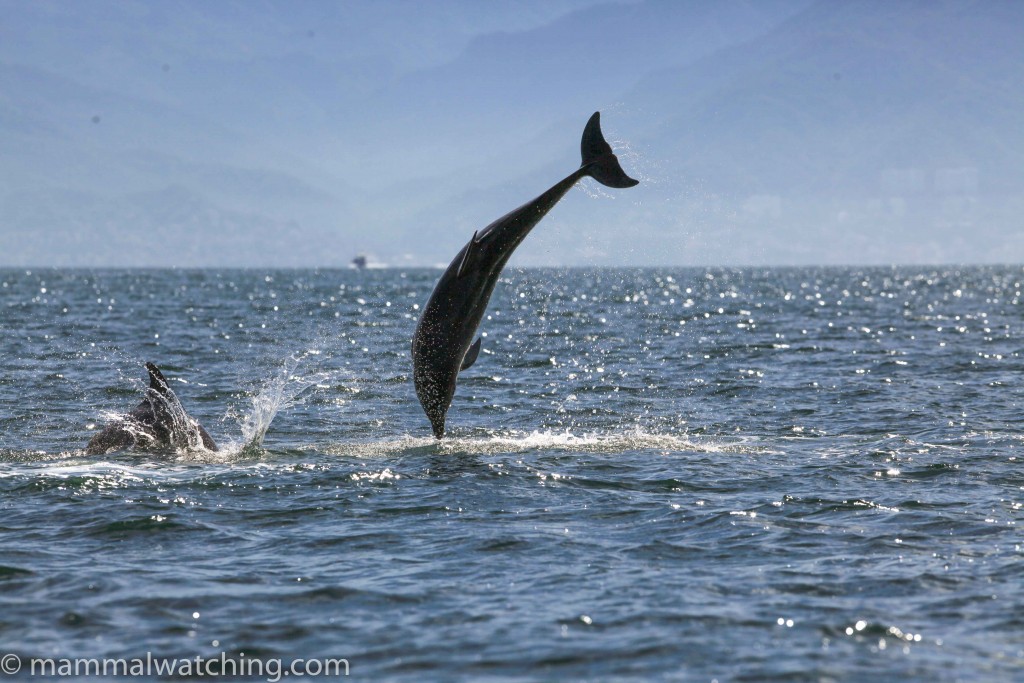
Common Bottlenose Dolphin, Tursiops truncatus
It was a fun trip. They told me they see Rough-toothed Dolphins occasionally, and our guide reckoned they were quite common further out. He thought the best way to see that species was to get a spot on a fishing boat.
Quintana Roo
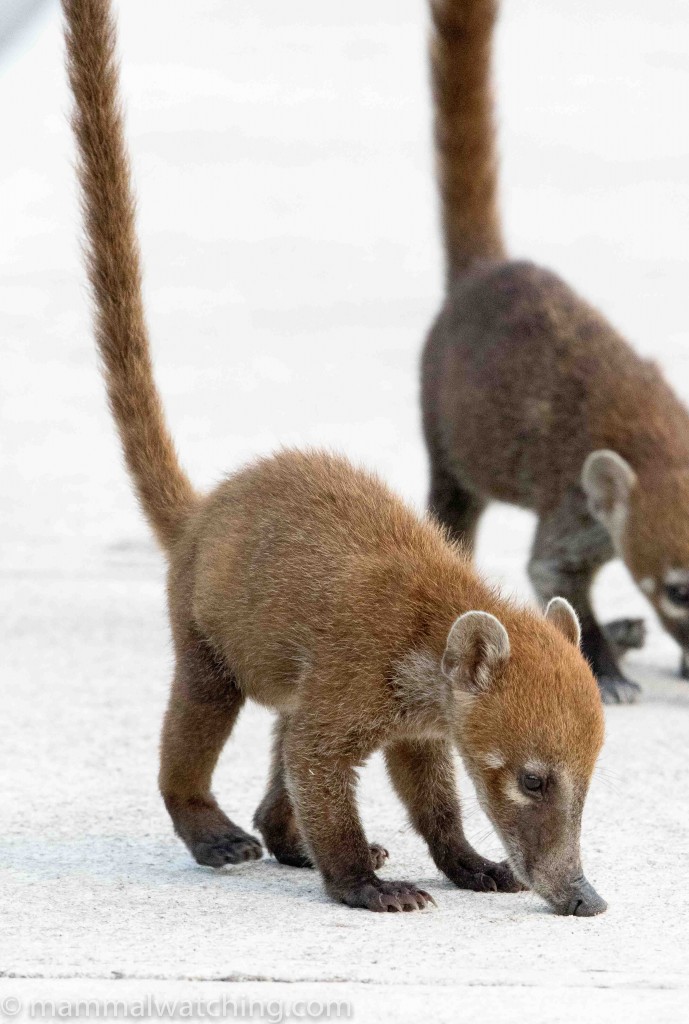
Cozumel Dwarf Coati, Nasua narica nelsoni
A day on Cozumel Island in October 2015 produced -with the help of David Valenzuela and his colleagues – an endemic Cozumel (Pygmy) Raccoon and many of the Dwarf Coati subspecies. See my 2015 trip report.
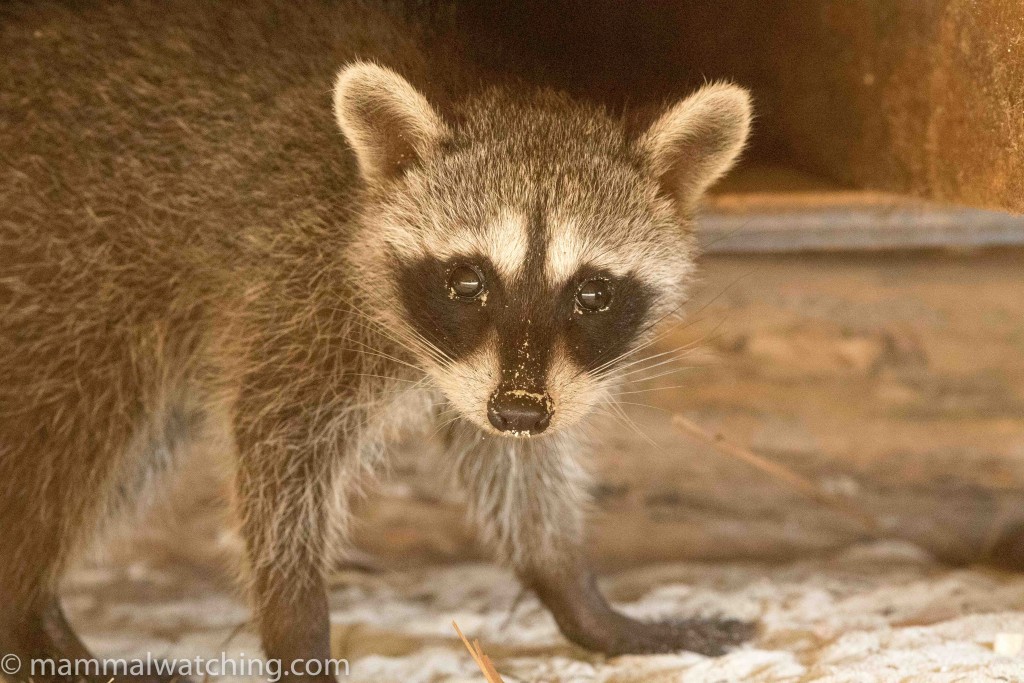
Cozumel Pygmy Raccoon, Procyon pygmaeus
The next day, in Puerto Aventuras, I saw Central American Agoutis, a Coati and my first Yucatan Squirrels. See my 2015 trip report.
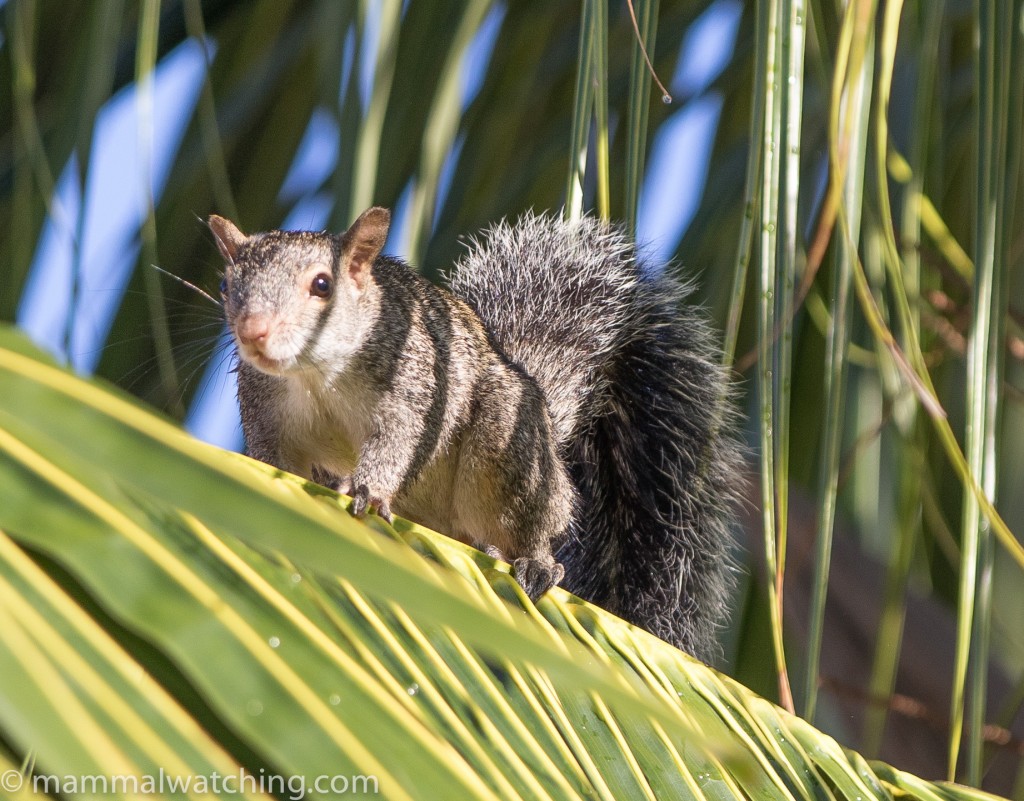
Yucatan Squirrel, Sciurus yucatanensis
Two nights near Laguna Om, on the Quintana Roo/Campeche border in 2025 produced Virginia Opossums, Kinkajous, Central American Spider Monkeys, Yucatan Cottontail and White-nosed Coatis. Plus several bats: Thomas’s Naked-backed; Sowell’s Short-tailed; Woolly False Vampire; Mexican Funnel-eared; and Great, Pygmy and Thomas’s Fruit-eating Bats but not the Wrinkle-faced Bats we hoped for.
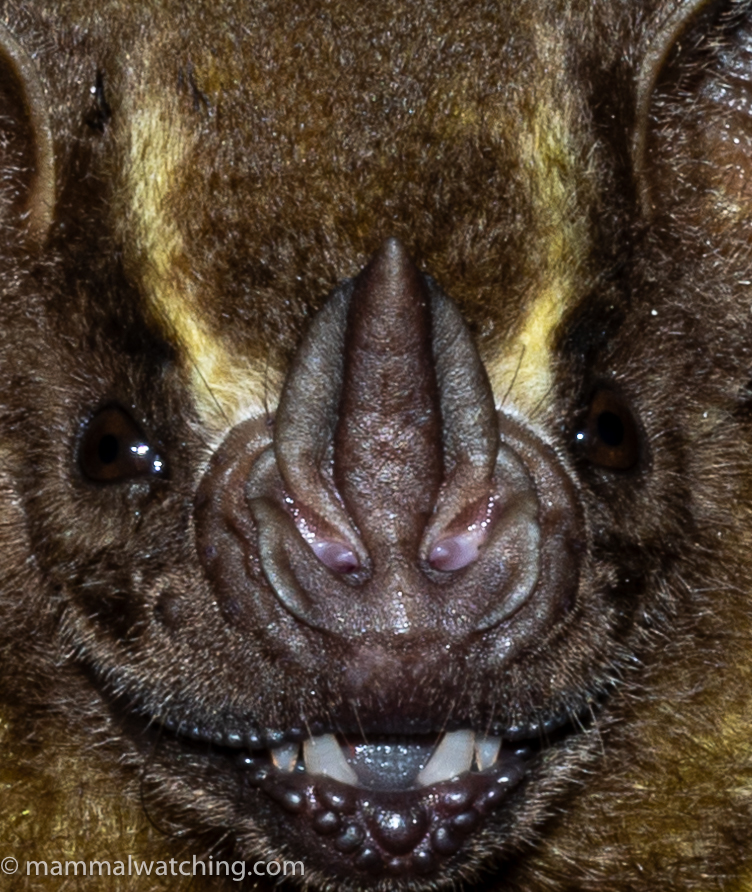
Great Fruit-eating Bat (Artibeus lituratus)
Two nights near Valladolid in 2025 produced Virginia Opossum, Northern Four-eyed Opossum, Central American Spider Monkey, Yucatan Vesper Rat, Kinkajou,Yucatan Cottontail. Mexican Hairy Porcupine, Slender Harvest Mouse, many Big-eared Climbing Rats, Mesoamerican Common Mustached Bat, Sowell’s Short-tailed Bat, Common Vampire Bat, Merriam’s Long-tongued Bat, Cozumelan Golden Bat, Jamaican & Pygmy Fruit-eating Bats, Northern Yellow-shouldered Bat and best of all nine Common Sword-nosed Bats!
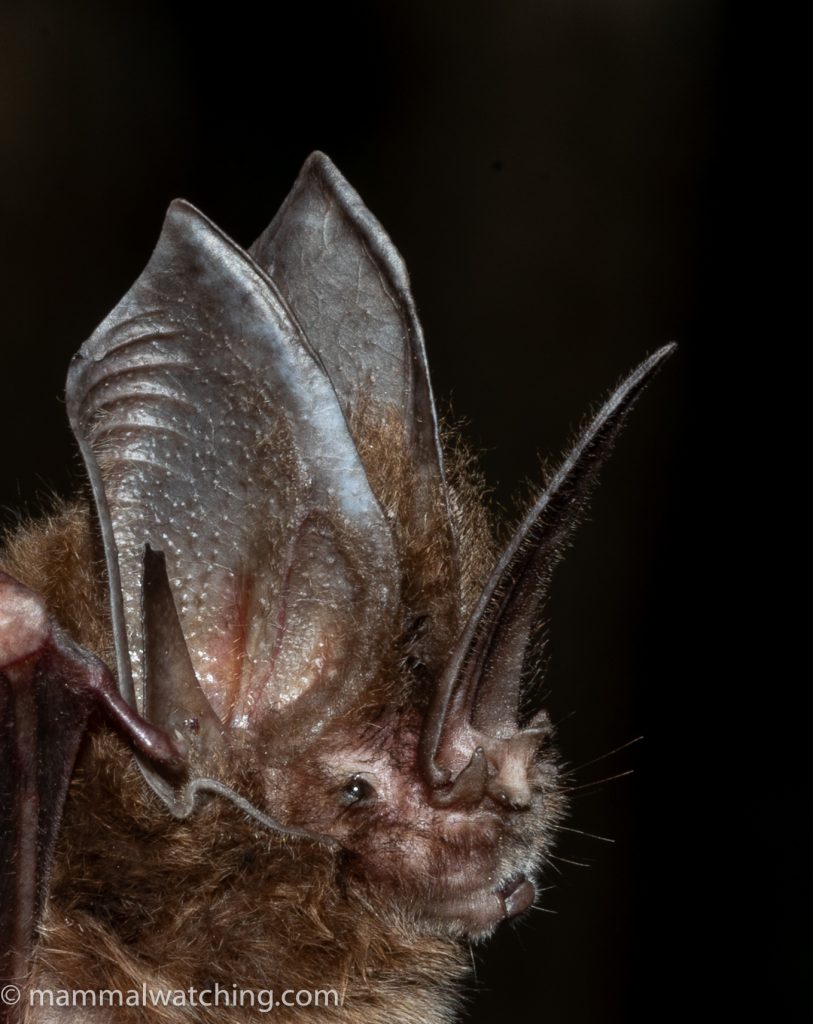
Common Sword-nosed Bat (Lonchorhina aurita)
Sinaloa
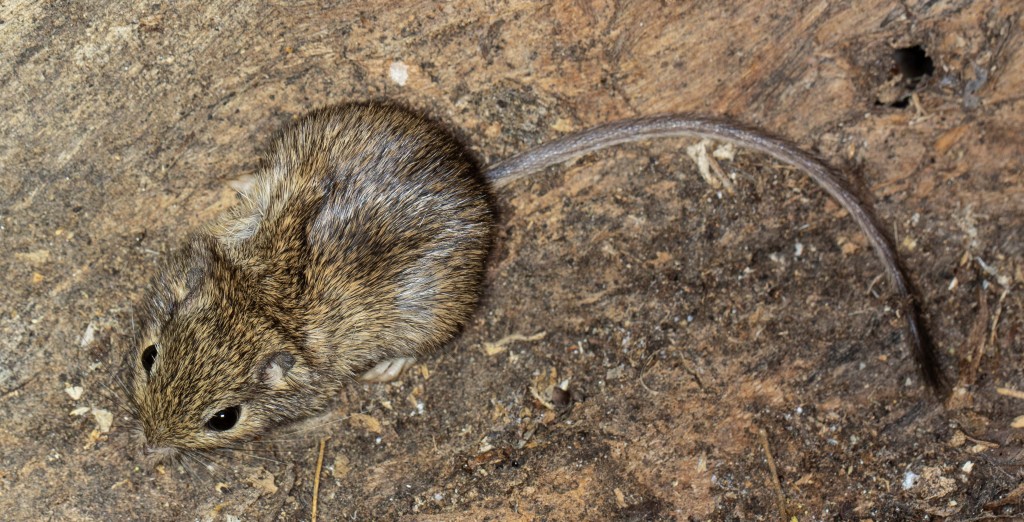
Sinaloan Pocket Mouse, Chaetodipus pernix
In 2021 three nights of trapping in Mazatlan and Jinetes de los Machado found Painted Spiny Pocket Mouse and Sinaloan Pocket Mouse; along with Cactus Mouse, Mesquite Mouse, and Nayarit and Gleaning Deer Mice.
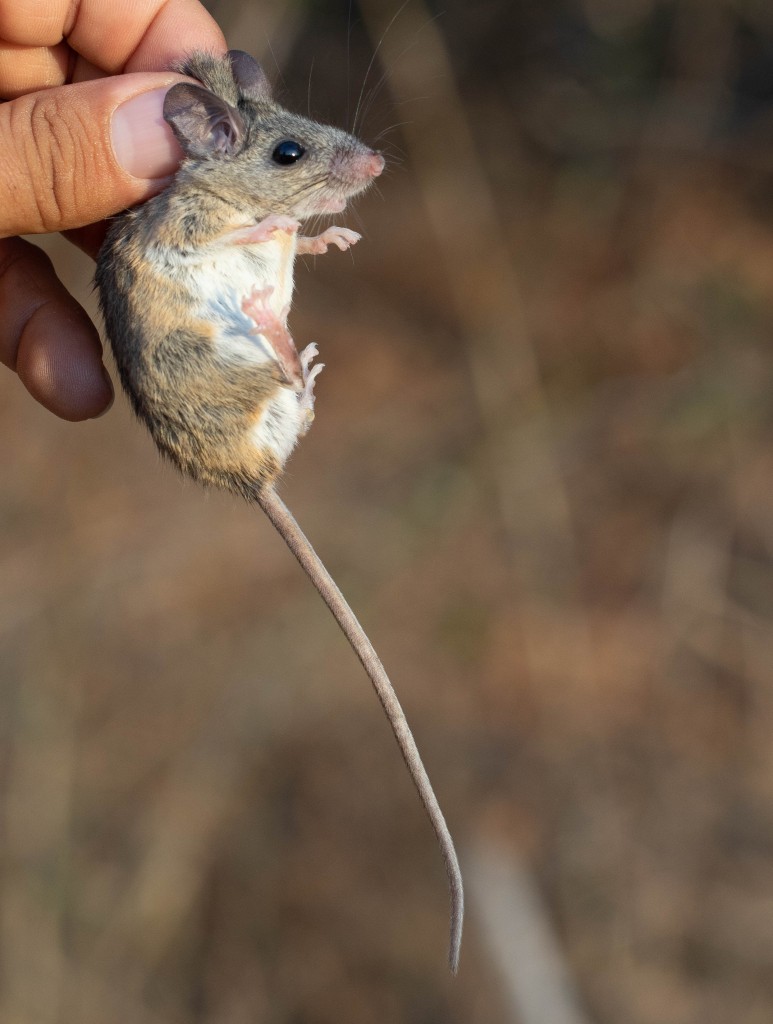
Mesquite Mouse, Peromyscus merriami
We saw Nine-banded Armadillo, Collie’s Squirrels and White-nosed Coatis as well as roosting Gray-Sac-winged, Waterhouse’s Leaf-nosed and Merriam’s Long-tongued Bats.
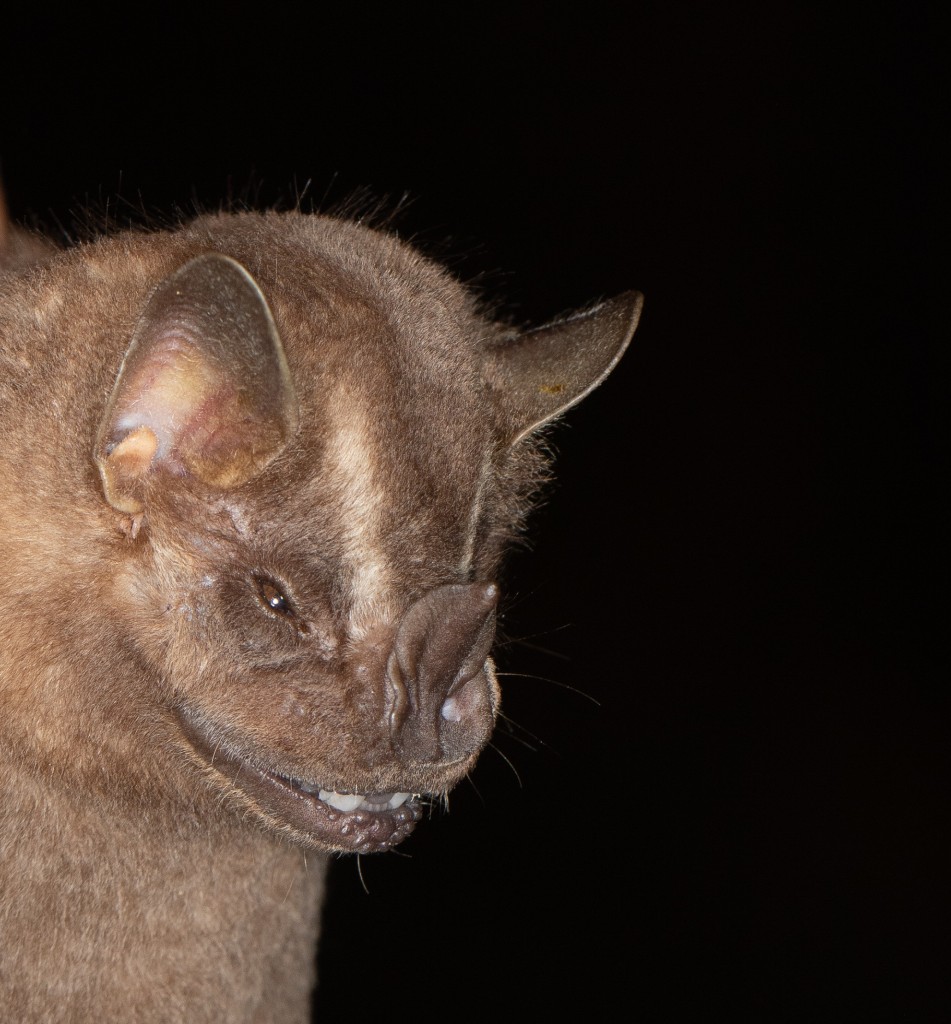
Hairy Fruit-eating Bat, Artibeus hirsutus
Bat netting was good, especially in Jinetes, and we had Waterhouse’s Leaf-nosed Bat; Merriam’s Long-tongued Bat; Little Yellow-shouldered Bat; Hairy, Jamaican, Great and Pygmy Fruit-eating Bats; and Little Yellow Bat.
Sonora
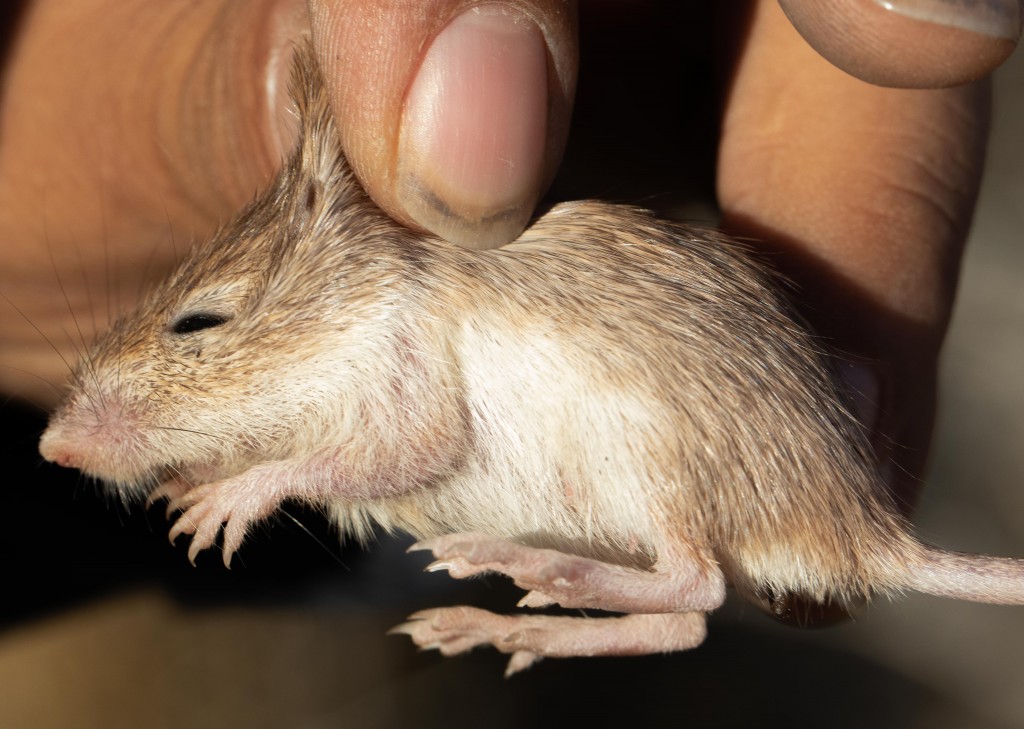
Goldman’s Pocket Mouse, Chaetodpius goldmani
In 2021 we caught Bailey’s Pocket Mice at Hermosillo and saw a couple of California Leaf-nosed Bats flying around. In Guayamas we caught a Desert Pocket Mouse and a Sonoran Woodrat.
Tabasco
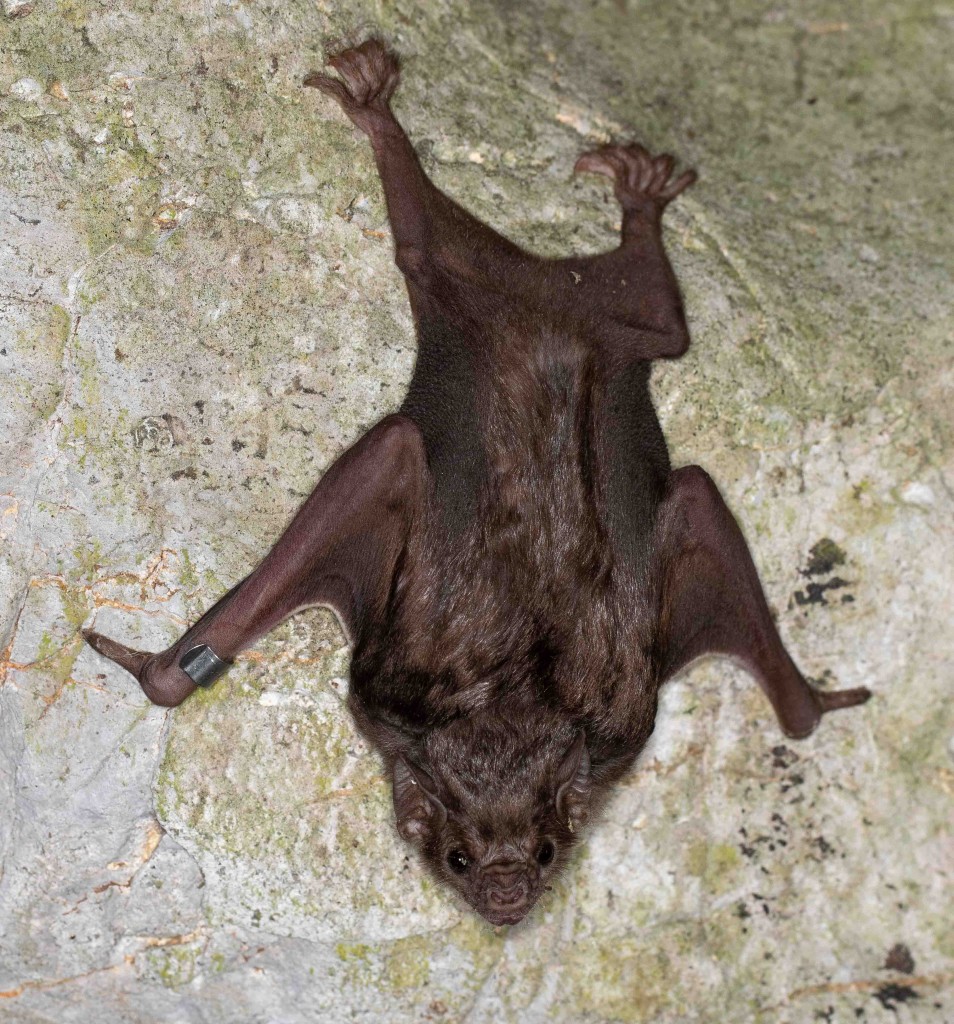
White-winged Vampire Bat, Diaemus youngi
I spent a weekend in 2020 batting near Tacotalpa and saw Thomas’s Sac-winged Bats, Common and White-winged Vampire Bats, Thomas’s Naked-backed Bat, Great and Jamaican Fruit-eating Bats and a Western Long-tonged Bat. We also saw Common, Virgina and Northern Four-eyed Opossums and caught some Big-eared Climbing Rats.
Veracruz
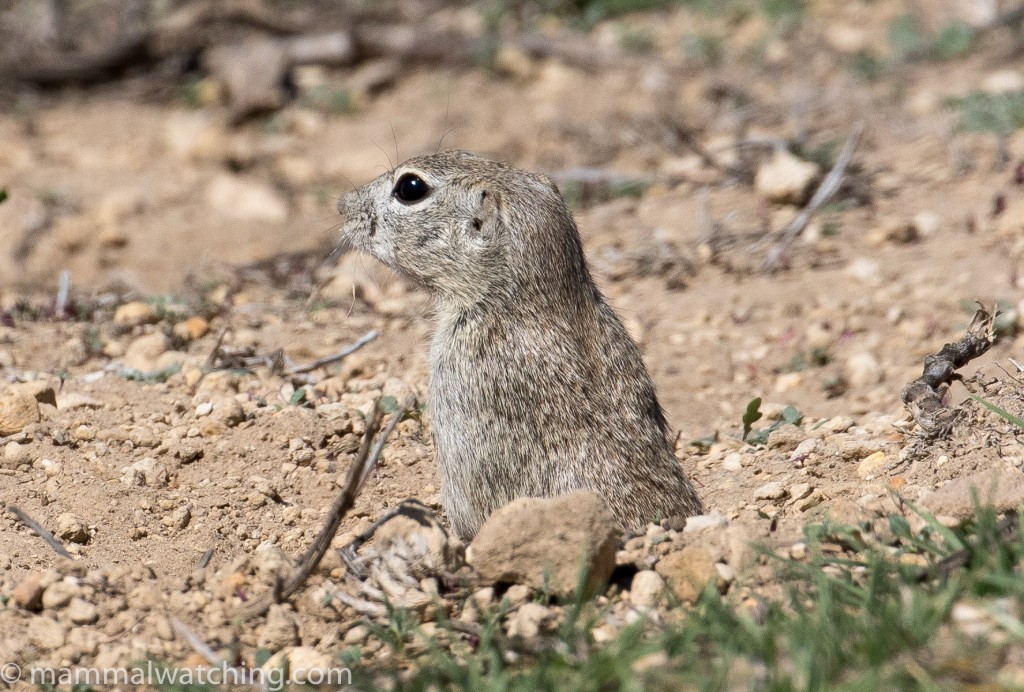
Perote Ground Squirrel, Spermophilus perotensis
We saw quite 10 or more Perote Ground Squirrels during two mornings at Totalco in 2018, along with an Oriental Basin Pocket Gopher and many Rock Squirrels. I couldn’t find a Long-tailed Weasel, common in the area, but did see a White-sided Jackrabbit and a pair of Phillips’s Kangaroo Rats while spotlighting, along with several Silky Pocket Mice and Southern Deer Mice.
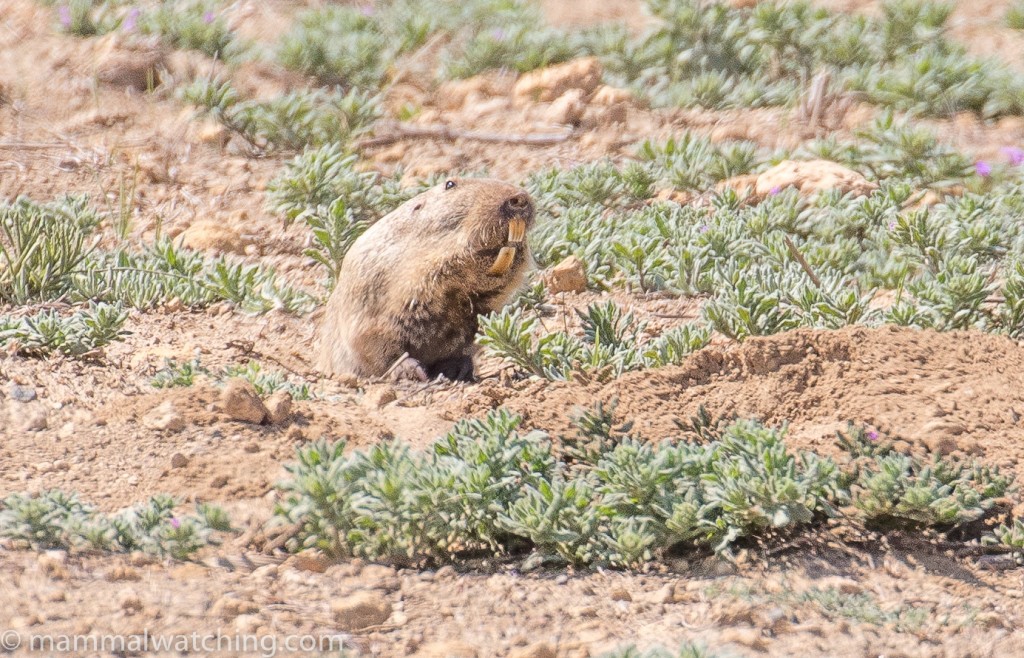
Oriental Basin Pocket Gopher, Cratogeomys fulvescens
Small mammal trapping was off the charts, with nearly every trap full and most containing a Oaxacan Rock Deer Mouse. Those that didn’t had Southern Deer Mice, Mexican Spiny Pocket Mice, Western Harvest Mice and just two Perote Deer Mice.
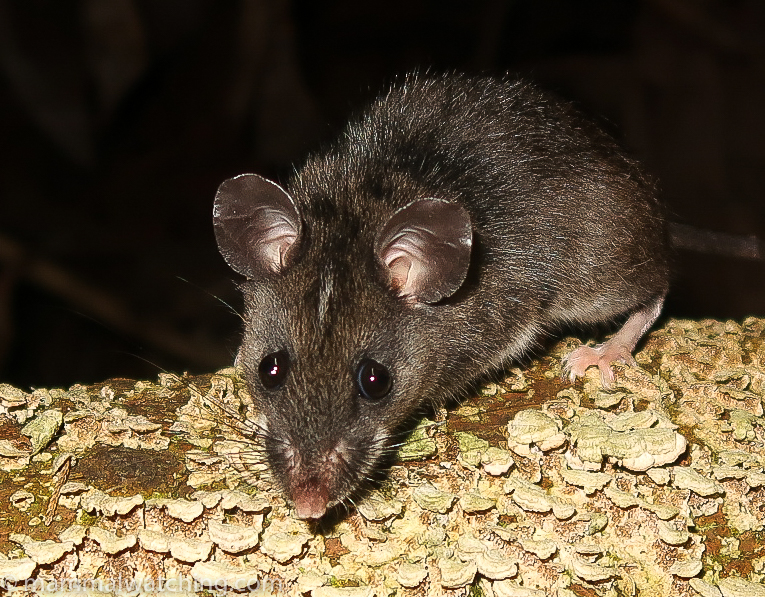
Blackish Deer Mouse, Peromyscus furvus
An hour east of Totalco, in Rancho Viejo near Xalapa, we caught several Blackish Deer Mice, an Alfaro’s Rice Rat and a Northern Pygmy Rice Rat in 2018.
Yucatan
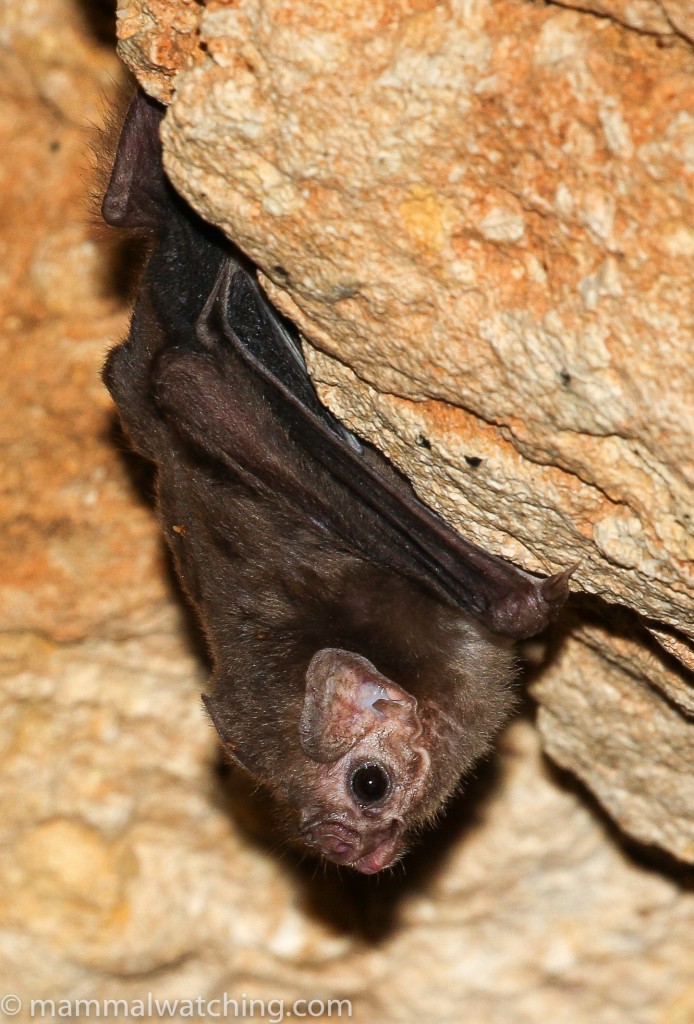
Hairy-legged Vampire Bat, Diphylla ecaudata
Two nights around Merida in 2019 produced Common and Hairy-legged Vampire Bats, Cozumel Golden and Mexican Funnel-eared Bats, Northern Black and Alvarez’s Mastiff Bats plus Big-eared Climbing Rats and Yucatan Deer Mice.
Community Reports
The World’s Best Mammalwatching
Mexico, considering its proximity to the USA, is under-visited by mammalwatchers. There are of course security concerns right now in parts of the country, but a lot of Mexico is as safe and friendly as it has ever been. It is also jam packed with a plague of mammals, and many of the smaller ones are endemic. This is the perfect country to visit with a local biologist like Juan Cruzado Cortés. Not only does Juan know where to find the mammals, and how to catch them, but he can also ensure you stay safe and learn a lot about small mammal and bat catching in the process. I’ve taken three short trips with Juan – here’s one in the Yucatan in 2019 – and there are many more that I plan to take. See more of the World’s Best Mammalwatching.
Community Reports
The Yucatan Peninsula, 2025: Jon Hall, 4 nights & 25+ species including Yucatan Vesper Mouse, Yucatan Cottontail and Common Sword-nosed Bat.
Lamanai Outpost Lodge (Belize) and a bit of Quintana Roo and Guatemala, 2025: Matthew and Maureen Steer with 14 species including Northern Ghost Bat, Mexican Porcupine and Tayra.
Northern Mexico, 2024: Venkat Sankar, 10 nights & 48 species including Coahuila, Buller’s, and Durango Chipmunks, Tamaulipas Jackrabbit, Desert Spotted Skunk, El Carrizo Mouse, Nelson’s Kangaroo Rat, and Durango Pocket Mouse. A great report including some barely known mammals that may never to have been photographed before let alone reported here!
Cetaceans in Baja California Sur & Norte, 2024: Jon Hall ‘s report of seeing Dwarf Sperm Whales and Vaquita in the Gulf of California.
Chiapas & Oaxaca, 2024: Jon Hall, 1 week & 54 species including some very rare mice, Tehuantepec Grey Mouse Opossum and Tehuantepec Jackrabbit.
Baja Peninsula, 2024: Jane Kempler’s report of a three week whalewatching and diving trip with species including Grey Whales and a Blue/Fin Whale hybrid.
Tres Marias Island, 2023: John & Karen Shrader’s report of a successful search for the Tres Marias Cottontail and the Tres Marias Raccoon.
Baja California Sur, Nuevo Leon and Coahuila, 2022: Jon Hall, 9 days & 38 species including Fish-eating & Flat-headed Myotis, Mexican Prairie Dog and Goldman’s Woodrat.
Baja and the Sea of Cortez, 2022: Naturetrek, 14 days & 17 species including Guadalupe Fur Seals and Blue Whales.
Sonora, Sinaloa & Hidalgo, 2021: Jon Hall, 9 days & 37 species including Hairy Fruit-eating Bat, Sonoran Woodrat, Smoky Pocket Gopher and Nelson’s Giant Deer Mouse.
Yucatan, 2021: Andreas Jonsson, 6 nights and 24 mammals including Kinkajou, Gray Four-eyed Opossum, Tayra, Baird’s Tapir and a Big-eared Climbing Rat.
Tabasco Bat Weekend, 2020: Jon Hall, 2 days & 12 species including Thomas’s Sac-winged Bats and a White-winged Vampire Bat.
Yucatan Bat Weekend, 2019: Charles Hood, 3 days & 18 species, 16 of them bats including Cozumel Golden Bat and Black Mastiff Bat.
Central Mexico, 2019: Venkat Sankar, 6 days & 36 species including Mexican Volcano Mouse, Mexican Big-eared Bat, Least Sac-winged Bat, Sword-nosed Bat and Ghost-faced Bat
Yucatan, 2019: Jon Hall, 3 nights & 26 species including Orange-throated, Cozumel Golden and Hairy-legged Vampire Bats.
Oaxaca, 2019: Venkat Sankar, 5 days & 27 species including Tarabundi Vole, Oaxaca Giant Deer Mouse, White-sided Jackrabbit and Pale Spear-nosed Bat.
Yucatan, 2019: Venkat Sankar, 3 nights & some nice species including a Margay, Mexican Mouse Opossum and Alvarez’s Mastiff Bat.
Mexico City & Veracruz, 2018: Jon Hall, 3 days & 24 species including Volcano Rabbit, Volcano Mouse and Perote Ground Squirrel.
Oaxaca, 2018: Jon Hall, 4 days & 22 species including Van Gelder’s Bat and Osgood’s Mouse.
Yucatan, 2018: Venkat Sankar, 5 nights & 41 species including Hairy-legged Vampire Bat, Cozumel Golden Bat and Gaumer’s Mouse Opossum.
Baja California & the Sea of Cortez, 2017: Richard Webb, 11 days & 16 species including Dwarf Sperm Whale, Peruvian (Pygmy) Beaked Whales and Guadalupe Fur Seals.
Yucatan, 2016: Richard Webb, 2 weeks & 17 species including Tayra, Long-tailed Weasel and a Margay!
Mexico, 2016: Venkat Sankar, 10 days & 42 species including Durango Chipmunk, Smoky Pocket Gopher, Southern Rock Mouse, Volcano Rabbit and Mexican Giant Shrew.
Yucatan, 2016: Vladimir Dinets, 10 days & lots of smaller mammals in particular including Mexican and Grayish Mouse Opossums, Yucatan Small-eared Shrew and Black-winged Little Yellow Bat.
Sea of Cortez, 2016 (April), 2016 : Naturetrek, 2 weeks & 15 species including Blue Whale, Bryde’s Whale, Guadalupe Fur Seal and Botta’s Pocket Gopher.
Sea of Cortez, 2016 (Feb): Naturetrek, 2 weeks & 18 species including Blue Whale, Bryde’s Whale and Dwarf Sperm Whale.
Quintana Roo, 2015: Jon Hall, 2 nights and 5 species including Cozumel Raccoon, Cozumel Coati and Yucatan Squirrel.
Yucatan, 2015: Chris Shepherd, 3 weeks & 15 or so species including a Tayra and Mexican Mouse Opossum.
Chiapas, 2015: Michael Kessler’s notes of mammals seen during a 3 week botanical trip to El Triunfo Biosphere Reserve. 20 species including Cacomistle, Tapir, Mantled Howler and Central American Spider Monkeys and (very nearly) a Jaguar.
Isla Guadalupe, 2014: Cheryl Antonucci’s trip to cage dive with White-pointer Sharks (Great Whites) also produced 12 mammals including Blue Whales, Guadalupe Fur Seals and Cuvier’s Beaked Whales. Fantastics pictures.
Cozumel, 2012: Vladimir Dinets and some notes of a trip to Cozumel where the mammals include the endemic Cozumel Raccoons.
Central America, 2011 & 12: Dominie Brugiere, combined notes on two trips through the Yucatan, Guatemala, Honduras and Belize. Lots of mammals.
Mexico City area, 2012: Vladimir Dinets and some combined detailed notes on visits in 2003 and 2012, featuring many small mammals and bats.
Mexico, 2011: Hugh Buck, a month mainly birding but with 17 mammal species.
Baja California, 2010 : Coke Smith, 12 days & 21 species including Kit Foxes and an American Badger.
Also See
Listen to Barbara Taylor and Lorenzo Rojas-Bracho talk about Vaquita conservation on the mammalwatching podcast, July 2024
RFI Yucatan (Tulum area), November 2024
Vaquita and Conservation, October 2023
Northern Mexico. Some detailed notes on a range of sites and species from Vladimir Dinets (May 2015)
RFI for Jalisco (December 2011)
Margays in Colima and Michoacan (April 2011)
ID help wanted with Mexican mammals (March 2010)
Resources
Keys for identifying Mexico’s Mammals (book)
Range map for two endemic k-rats in central Mexico, October 2018


Leave a Reply
You must be logged in to post a comment.